
Smarter email, faster business.
Auto-tag, parse, and respond to RFQs, quotes, orders, and more — instantly.
Trending
Trending News
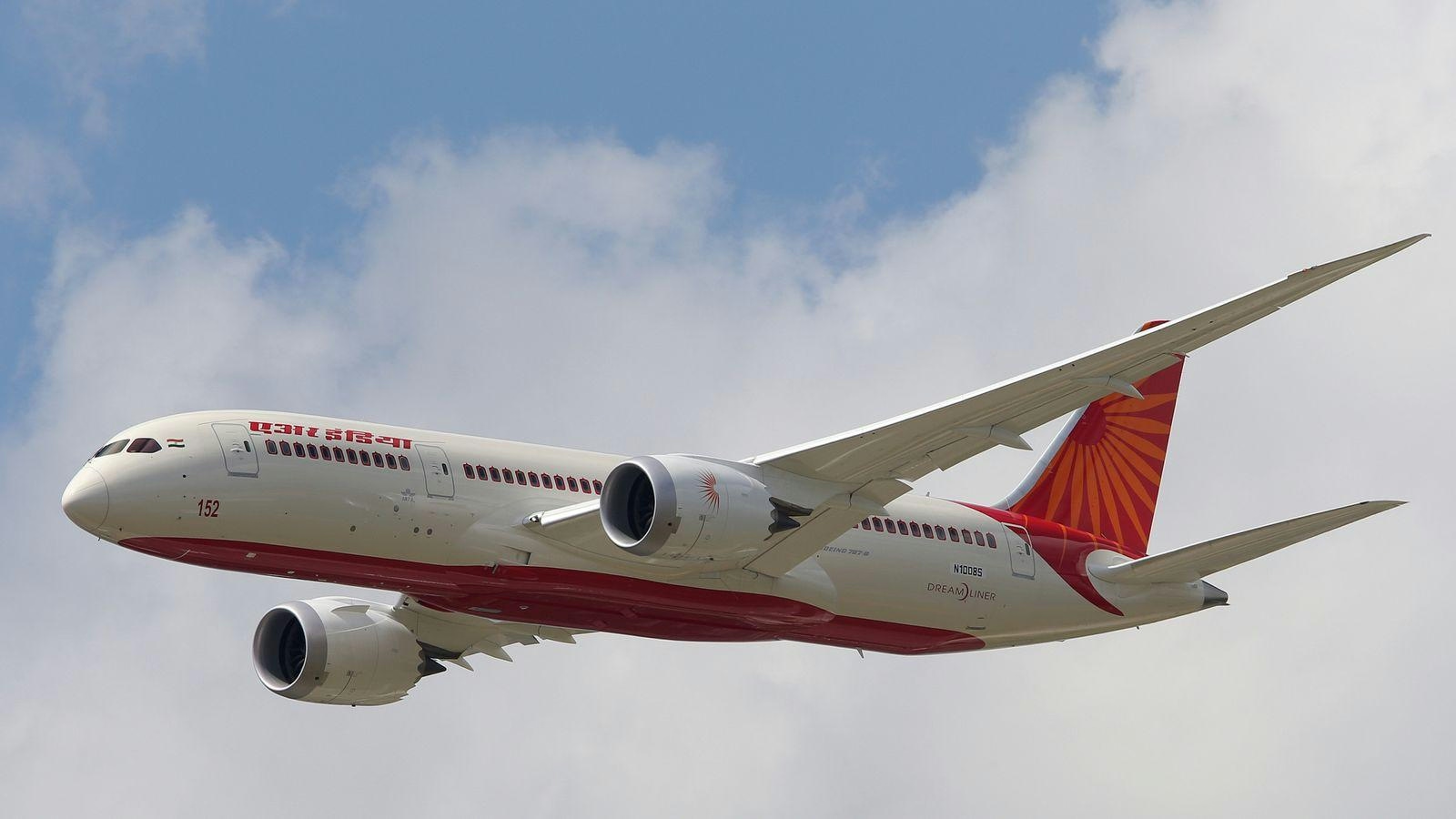
Aviation Expert Suggests Boeing 787 Software May Have Contributed to AI Crash
Aviation Expert Raises Concerns Over Boeing 787 Software in Air India Crash
Mary Schiavo, former Inspector General of the U.S. Department of Transportation and a prominent aviation attorney, has expressed serious concerns that a software-related engine thrust rollback malfunction in the Boeing 787 may have played a role in the recent crash of Air India Flight AI-171. In an exclusive interview with *The Sunday Guardian*, Schiavo highlighted a known issue previously examined by the U.S. National Transportation Safety Board (NTSB), where the aircraft’s computer systems could mistakenly reduce engine thrust during flight.
Drawing on her extensive experience overseeing major air safety investigations and representing families affected by aviation disasters, Schiavo emphasized the risks posed by Boeing’s involvement in its own crash investigations. She called on India’s Directorate General of Civil Aviation (DGCA) to undertake a comprehensive and independent inquiry, particularly given the complexity of the Boeing 787’s software systems.
Software Malfunction and Regulatory Concerns
Central to Schiavo’s warning is the Thrust Control Malfunction Accommodation (TCMA) system, mandated by the Federal Aviation Administration for the Boeing 787. The TCMA operates in conjunction with the Full Authority Digital Engine Control (FADEC) system, relying on computer inputs to determine whether the aircraft is airborne or on the ground. If these systems incorrectly classify the aircraft’s status, they may automatically adjust engine settings, potentially reducing thrust without any pilot intervention.
Schiavo referenced a 2019 incident involving Japan’s All Nippon Airways (ANA), where a similar dual engine thrust rollback occurred. The NTSB investigation into that event identified the issue as a software design flaw and led to corrective measures across the 787 fleet. According to Schiavo, such computer-triggered thrust reductions would leave distinct signatures in the flight data recorder, which investigators should carefully analyze in the case of AI-171.
Wider Implications for Boeing and the Aviation Industry
The possibility that Boeing 787 software contributed to the Air India crash is expected to heighten scrutiny from aviation regulators worldwide. Should software faults be confirmed, both Boeing and Air India could face significant legal consequences. The incident may also prompt a broader reassessment of software-related risks within the 787 fleet. Schiavo drew parallels to Boeing’s handling of the MCAS software issue, which previously sparked global controversy and regulatory intervention.
Beyond regulatory and legal ramifications, the crash carries immediate consequences for the global aviation insurance market. Industry analysts warn that insurance and reinsurance premiums could increase, particularly in India, where the aviation insurance sector has already been grappling with financial losses. Competitors may leverage the situation to highlight their own safety records and technological advancements, potentially affecting Boeing’s market position.
For Air India, the crash presents a critical challenge to its Vihaan.AI transformation program, which aims to elevate the airline to world-class status within five years. The investigation’s outcome and the airline’s subsequent response will be closely monitored by regulators, insurers, and the traveling public.
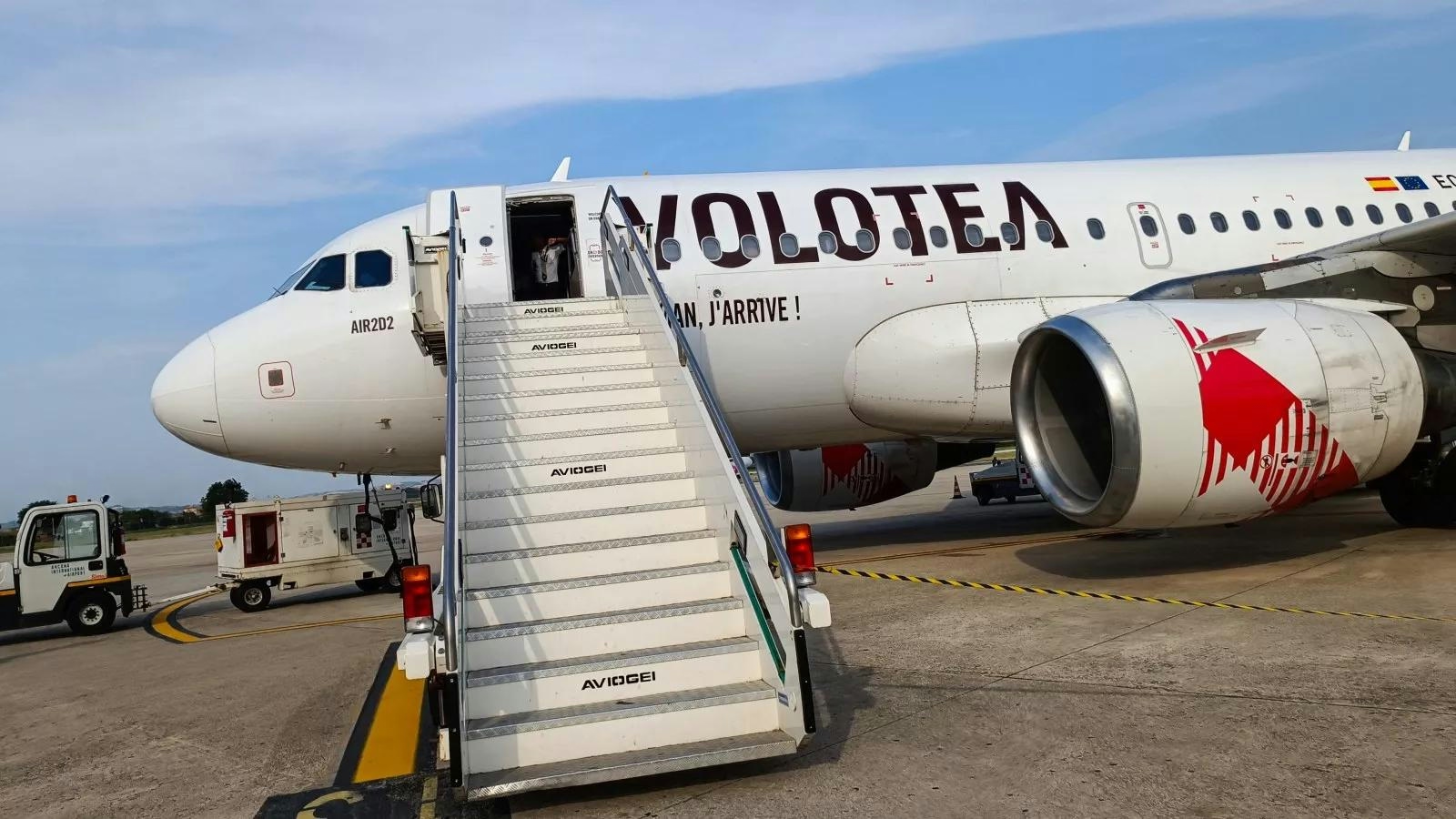
Investigation Launched into Fatal Injury Caused by Volotea A319 Engine at Milan Bergamo Airport
Investigation Launched into Fatal Injury Caused by Volotea A319 Engine at Milan Bergamo Airport
A tragic accident at Milan Bergamo Airport has resulted in the death of a ground worker after being struck by the engine of a Volotea Airbus A319 during taxiing operations. The incident occurred as the aircraft was maneuvering along a taxiway in preparation for departure. Italian authorities have initiated a formal investigation to establish the exact circumstances surrounding the fatality.
Details of the Incident
The accident took place at Milan Bergamo Airport, a key hub for low-cost carriers in northern Italy. The Volotea Airbus A319 involved, a narrow-body aircraft typically deployed on short- and medium-haul routes, was not carrying passengers at the time of the incident. Preliminary reports indicate that the victim, whose identity has not been disclosed, was working in close proximity to the aircraft’s engine when the accident occurred. The flight crew onboard the aircraft were unharmed.
Investigators are currently examining whether the engine was operating at high thrust during the incident and if all standard safety protocols were properly observed. The precise sequence of events remains under review as authorities gather further evidence.
Investigation and Regulatory Response
Italy’s Civil Aviation Authority (ENAC) has launched a comprehensive inquiry focusing on airport safety procedures and the aircraft’s taxiing operations. The investigation seeks full cooperation from Volotea, airport management, and ground personnel to clarify the factors that contributed to the fatal accident.
The inquiry will evaluate whether established safety measures were adhered to and if any technical or procedural lapses played a role. The findings are anticipated to influence future safety protocols and may have wider implications for ground operations across Italian airports.
Airport and Airline Statements
Both Milan Bergamo Airport and Volotea have expressed their condolences to the family of the deceased and have pledged full cooperation with the ongoing investigation. Airport officials confirmed that the accident occurred during routine taxiing and noted that overall airport operations were not significantly disrupted. They also emphasized their commitment to reviewing and enhancing safety protocols to prevent similar incidents in the future.
A spokesperson for Volotea stated, “We are deeply saddened by this tragedy and are fully cooperating with the authorities to understand the cause of this incident. Our thoughts are with the family of the individual involved, and we are committed to supporting the investigation process in any way possible.”
Broader Implications for Volotea and the Industry
This incident places Volotea under heightened regulatory scrutiny and may expose the airline to compensation claims as well as reputational challenges. Should Volotea be publicly traded, market reactions could include fluctuations in its stock price. Competitors within the industry may respond by reinforcing their own safety measures and issuing public reassurances to maintain customer confidence.
The tragedy highlights the critical importance of strict adherence to ground safety protocols, particularly in the vicinity of active aircraft engines. Modern jet engines, such as those fitted on the Airbus A319, present significant hazards if safety procedures are not rigorously enforced. The ongoing investigation will be closely monitored by industry stakeholders and the public alike.
For further updates, official statements from Volotea and Italian aviation authorities should be consulted.
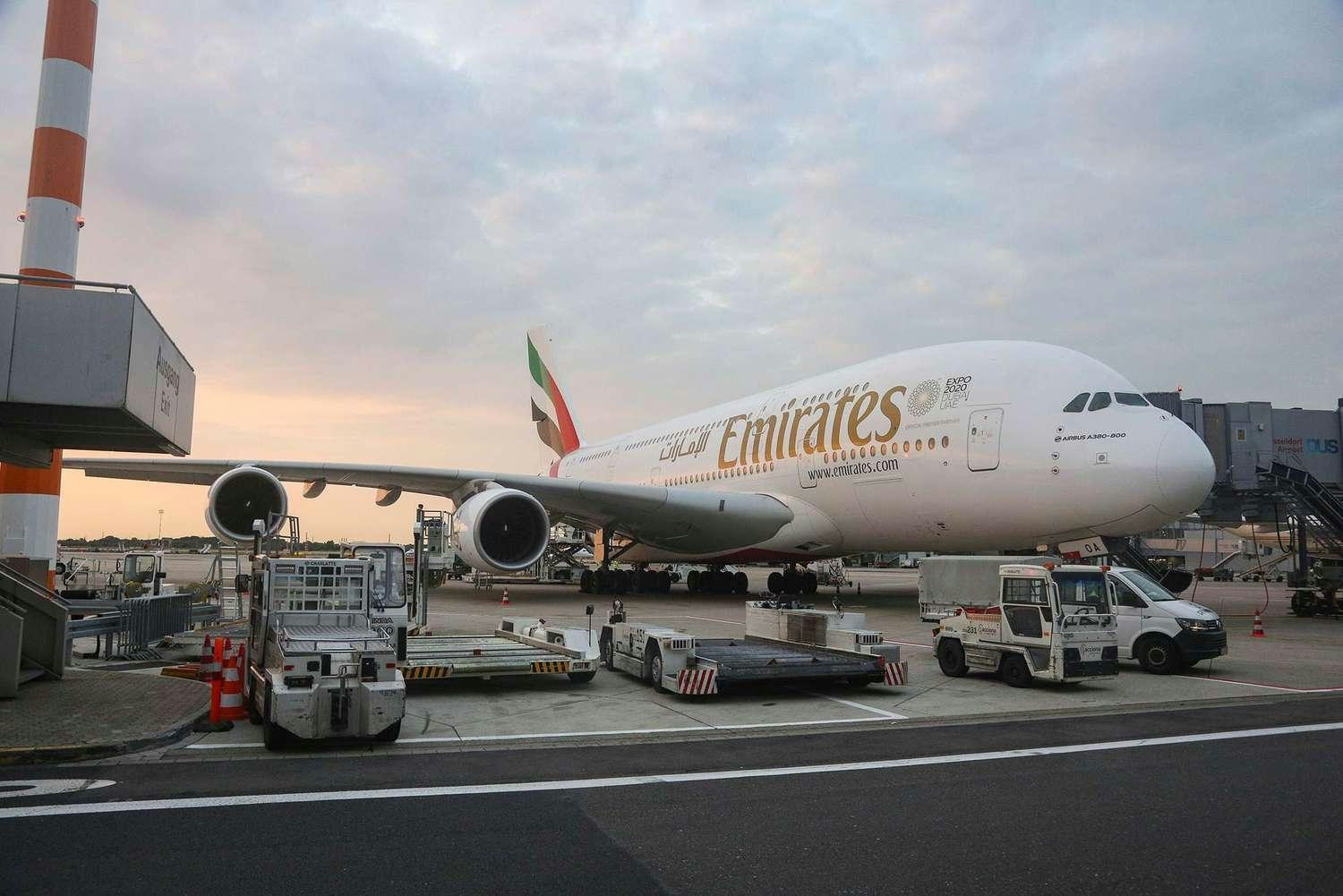
Emirates A380 Makes Emergency Landing at JFK After Engine Shutdown
Emirates A380 Executes Emergency Landing at JFK Following Engine Shutdown
On June 28, 2025, Emirates flight EK203, operated by an Airbus A380-800 (registration A6-EUW), conducted a safe emergency landing at New York’s John F. Kennedy International Airport (JFK) after experiencing an in-flight shutdown of its number one engine. The aircraft, en route from Dubai International Airport (DXB) to JFK, encountered the failure of its far-left engine while flying over the northeastern United States.
Incident and Response
Despite the loss of one of its four engines, the flight crew maintained full control of the aircraft, ensuring the safety of all 450 passengers and crew aboard. The pilots promptly declared an emergency with Boston Center, before coordination was transferred to New York Approach. Air traffic controllers guided the aircraft toward JFK, clearing it to land on runway 22L, the airport’s longest runway, as requested by the crew.
At the time of the incident, EK203 was carrying approximately 24.8 tonnes of fuel, sufficient for about one hour of flight time. Throughout the descent and approach, the crew worked closely with air traffic control (ATC), providing critical information including fuel quantities and local pressure settings. While some observers questioned the necessity for pilots to convert units mid-flight, the crew’s swift and precise communication demonstrated their professionalism under pressure.
Operational and Industry Implications
The emergency landing underscored the vital importance of seamless collaboration between flight crews and ATC during in-flight crises. Controllers adhered to established emergency protocols, offering clear navigational guidance and continuous updates, which contributed significantly to the safe touchdown at 8:57 AM local time.
However, the incident also revealed minor communication lapses, notably ATC’s initial uncertainty regarding the exact location of the failed engine. Aviation experts have highlighted the need for enhanced training and improved reference tools for controllers, particularly when managing complex aircraft such as the Airbus A380. Such measures could help prevent similar oversights in future emergencies.
This event occurs amid heightened public scrutiny of airline safety, following recent high-profile engine issues involving other major carriers including American Airlines and Delta. Industry analysts suggest that incidents of this nature may challenge passenger confidence and prompt closer examination of Emirates’ maintenance protocols. The episode could also trigger insurance reviews and claims, while competitors might leverage the situation to emphasize their own safety records and operational reliability in marketing campaigns.
Despite these broader industry ramifications, the professionalism exhibited by both the Emirates flight crew and air traffic controllers ensured a safe outcome for all on board. The incident serves as a reminder of the critical importance of training, communication, and preparedness in maintaining aviation safety.
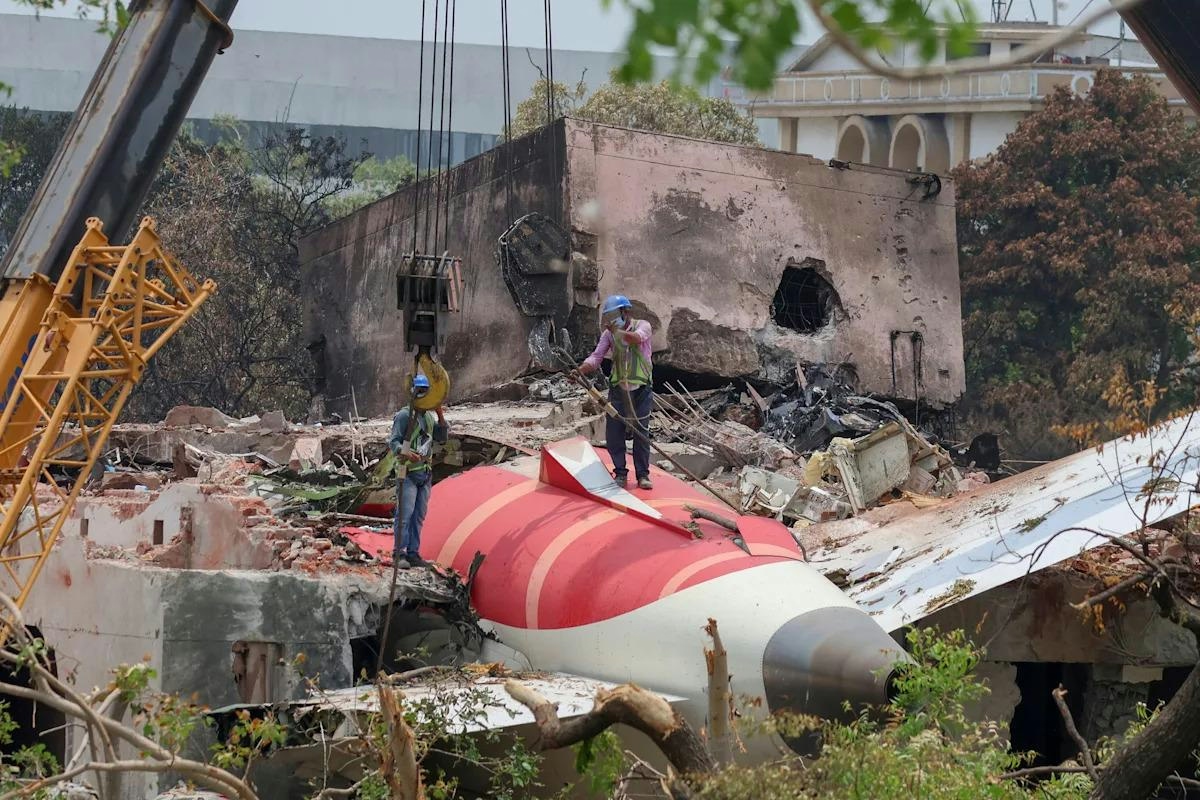
Aviation Expert Criticizes Preliminary Report on AI 171 Crash for Lack of Technical Detail
Aviation Expert Criticizes Preliminary Report on AI 171 Crash for Lack of Technical Detail
The preliminary investigation into the Air India Flight 171 crash has faced significant criticism from aviation safety experts for its insufficient technical transparency and detail. Amit Singh, an experienced Boeing 777 pilot and founder of the NGO Safety Matters, contends that the interim report falls short of providing the clarity and urgency demanded by a disaster of this magnitude. The crash on June 12 resulted in the loss of 260 lives and has since raised urgent questions regarding Air India’s safety protocols and the wider implications for India’s aviation industry.
Analysis of the Report’s Findings and Deficiencies
The report begins by citing a 2018 FAA Special Airworthiness Information Bulletin (SAIB) that highlighted a potential disengagement issue in the fuel control switch locking mechanism. Despite this warning, Air India had not conducted inspections on its fleet in response to the bulletin. The mechanical failure in the fuel control switch is believed to have allowed the switches to move directly, bypassing the intended safety lock, which may have cut off fuel supply to both engines, causing their shutdown and the subsequent crash.
A key element of the report is the timeline of the engine failure. The aircraft took off at 1:38:39 p.m., reaching a speed of 180 knots by 1:38:42 p.m. Shortly thereafter, both fuel control switches reportedly moved to the ‘cut off’ position. This sequence suggests the engines lost thrust at that moment. However, the report also notes the deployment of the Ram Air Turbine (RAT)—a backup power source that activates only after both engines fail—during the initial climb immediately after takeoff. This implies the engines ceased functioning just before liftoff, yet the switches were moved to shut off later, creating ambiguity about the precise order of events.
Demand for Greater Technical Clarity
Experts emphasize that determining whether the fuel cutoff resulted from human error or a technical malfunction requires more comprehensive information. Essential details include exact cockpit actions and switch movement logs, the full transcript of the cockpit voice recorder (CVR), confirmation on whether the locking mechanisms on the fuel switches were installed or disabled, and evidence of any uncommanded system inputs or failures.
The preliminary report offers only a brief excerpt from the CVR, in which one pilot questions the other about switching off the fuel supply, and the other denies doing so. This limited disclosure contrasts sharply with other high-profile investigations, such as the 33-page preliminary report on Ethiopian Airlines Flight ET 302 (737 MAX), which contained extensive technical data, CVR excerpts, and manufacturer bulletins. By comparison, the AI 171 report reads more like a narrative and lacks actionable recommendations for immediate inspections or corrective measures.
Broader Implications for Aviation Safety and Industry Confidence
The absence of detailed technical information in the report carries wider ramifications. Aviation experts warn that such omissions could influence market reactions and shape competitor responses. The crash has already dealt a severe blow to Air India’s reputation and may undermine investor confidence in the Indian aviation sector more broadly. This incident highlights the critical need for rigorous safety protocols and transparent, thorough investigations to restore trust and prevent future tragedies.
In sum, the preliminary report on the AI 171 crash leaves vital questions unresolved, underscoring the imperative for enhanced technical detail and transparency in aviation accident investigations.
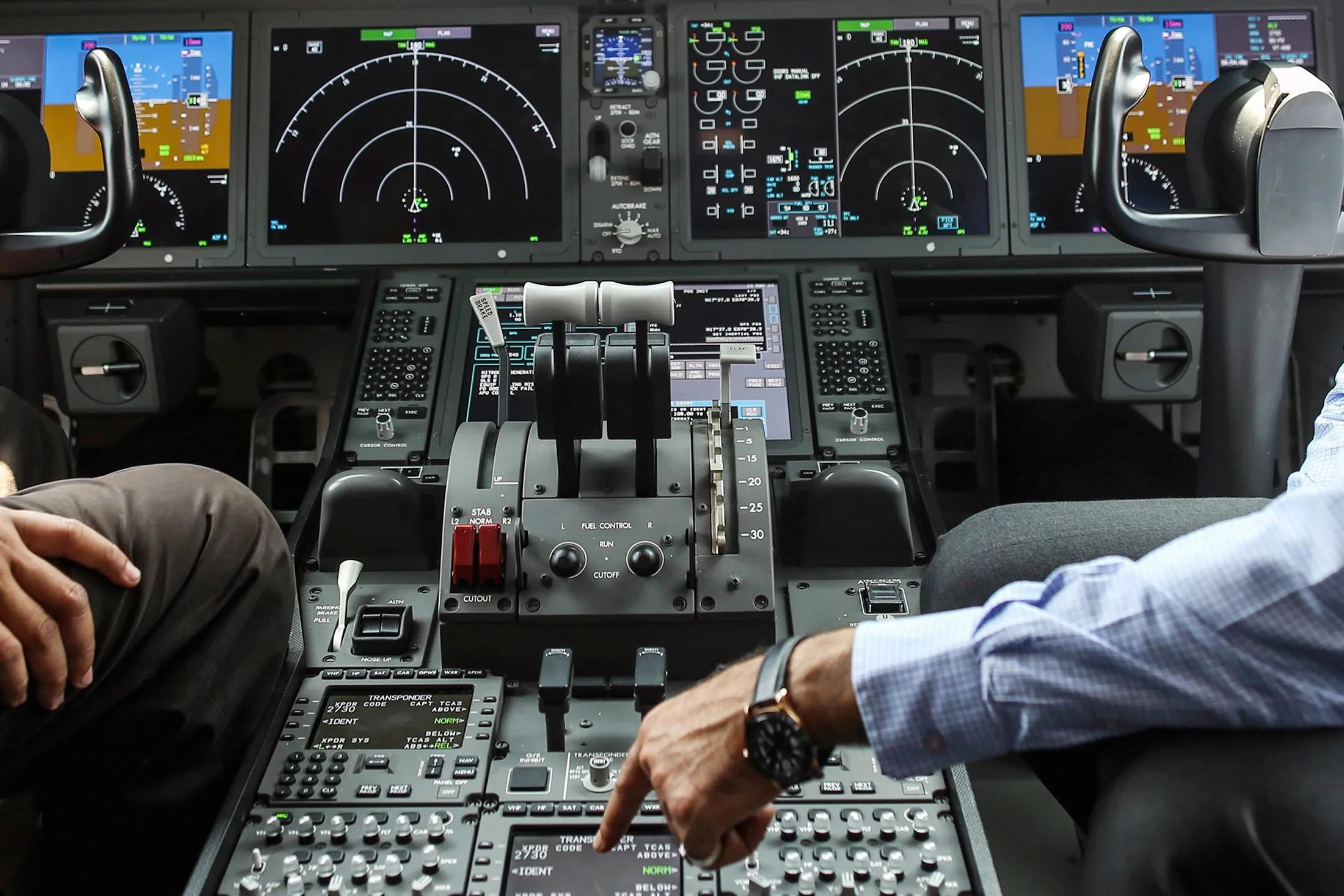
Singapore Airlines to Hire Over 100 Air India Pilots with Conditions
Singapore Airlines to Hire Over 100 Air India Pilots Amid Strategic Partnership
Singapore Airlines (SIA) has announced plans to hire over 100 pilots from Air India for deputation roles at its low-cost subsidiary, Scoot. These positions, based at Singapore Changi Airport, will involve voluntary postings lasting one to two years. The initiative aims to provide Air India captains and first officers with international exposure and training on Embraer aircraft, a type not currently operated by Air India. This move is part of a broader effort to strengthen operational ties between the two carriers and address pilot shortages at Scoot.
Strengthening Regional Aviation Ties
The collaboration between Singapore Airlines and Air India reflects a deepening alliance following SIA’s acquisition of a 25.1% stake in the merged Vistara-Air India entity, under Tata Sons’ consolidation. This partnership allows Scoot to tap into experienced pilot talent while offering Air India’s pilots valuable global experience and proficiency on new aircraft platforms. The initiative aligns with Air India’s ongoing transformation strategy post-privatization, aimed at enhancing its human capital and operational capabilities.
Air India CEO Campbell Wilson described the arrangement as a “win-win,” highlighting the synergy between the two airlines. Senior Singapore Airlines executives, including Basil Kwauk and Hamish Maxwell, have been actively involved in supporting Air India’s revival and capacity-building efforts. The two carriers already maintain an extensive codeshare agreement and regularly exchange best practices. Singapore Airlines has also hosted Indian counterparts in Singapore to share strategic insights on airline turnaround and international service models.
Challenges and Market Implications
Despite the strategic benefits, the plan to integrate over 100 Air India pilots presents challenges. Managing pilots from different operational backgrounds will require careful coordination, and the arrangement may attract regulatory scrutiny. The aviation industry currently prioritizes attracting skilled talent over offering significant financial incentives, suggesting that Singapore Airlines will need to provide competitive terms to secure these pilots. Furthermore, with SIA’s operating profit recently contracting amid broader macroeconomic uncertainties, the airline faces the challenge of balancing resource management with its growth ambitions.
The India–Singapore aviation corridor remains highly competitive, with Singapore Airlines carrying over 2.4 million passengers between the two countries in fiscal year 2025. Approximately 65% of these passengers transit through Singapore en route to Southeast Asia and Oceania. SIA competes with regional carriers such as Malaysia Airlines, Thai Airways, and Qantas for this lucrative onward traffic. The collaboration with Air India through Scoot is expected to enhance Singapore Airlines’ market access and crew pipeline while bolstering Air India’s international capabilities.
Scoot’s management emphasized its commitment to sourcing skilled personnel aligned with its corporate values, stating that the airline actively seeks talent both within and outside Singapore to support its continued growth. As the industry observes this development closely, competitors may adjust their strategies in response to Singapore Airlines’ latest initiative.
The partnership signals a long-term commitment to mutual growth, with its success contingent upon effective integration, regulatory compliance, and the ability to navigate ongoing industry challenges.
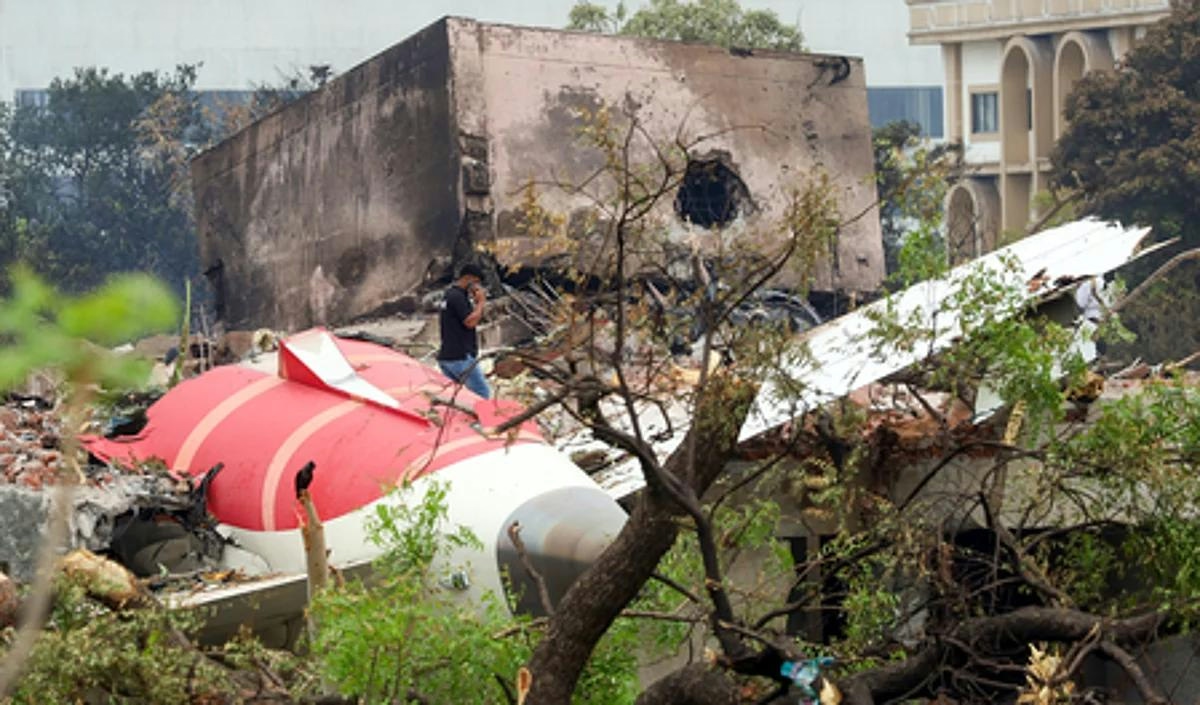
Call to Release Full Transcript of AI Flight 171 Audio Recording
Call for Full Disclosure of AI Flight 171 Cockpit Audio Transcript
The recent incident involving AI Flight 171 has ignited a contentious debate, particularly following strong objections from the Indian pilots’ association. The association criticized the preliminary report for what it described as unfair insinuations against the flight crew. Concurrently, certain Western media outlets have speculated about possible confusion in the cockpit, implying pilot error as a contributing factor. The Aircraft Accident Investigation Bureau (AAIB), in its initial findings, appeared to suggest this possibility but refrained from making explicit accusations. Notably, the AAIB’s report included only two paraphrased sentences from the pilots’ cockpit exchange, omitting the full audio transcript and raising significant concerns about transparency.
Unresolved Operational Details and Safety Concerns
Critical details surrounding the incident remain unclear. First officer Clive Kunder, aged 32, was at the controls during the event, with the pilot-in-command, Sumeet Sabharwal, 56, overseeing operations. It has not been established which pilot questioned the other regarding the shutdown of the fuel switches. The first fuel switch was turned off at 1:38:42 pm, but the crew took approximately ten seconds to reactivate it—a delay that has attracted scrutiny. Furthermore, the fuel supply to the second engine was restored four seconds after the first, rather than simultaneously. While the first engine responded promptly, the second continued to experience difficulties. These operational uncertainties are compounded by prior concerns raised by the US Federal Aviation Administration (FAA), which had flagged potential issues with Boeing’s fuel switch locking mechanism as early as 2018. The maintenance history of the fuel switches on this specific aircraft remains undisclosed.
Calls for Transparency Amid Ongoing Investigation
There is a growing demand for the AAIB to release the full transcript of the cockpit audio. Advocates argue that only complete transparency can dispel suspicions that the preliminary report was crafted to assign blame to the pilots, who tragically cannot defend themselves. Full disclosure is also seen as essential to provide some measure of closure to the victims’ families, even as the final investigation report may take up to a year to be completed.
However, the release of the full transcript presents challenges. The investigation remains active, and legal considerations may restrict the immediate publication of sensitive audio recordings. Beyond legalities, the aviation industry is closely monitoring Air India’s response, with heightened scrutiny on its operational protocols and safety standards. Rival airlines are reportedly reviewing their own safety procedures and may increase pressure on Air India to demonstrate full transparency.
At present, no definitive conclusions have been drawn regarding the cause of the crash. The insistence on releasing the full cockpit transcript highlights the broader imperative for openness and accountability, both to ensure a fair investigation and to restore public confidence in aviation safety.
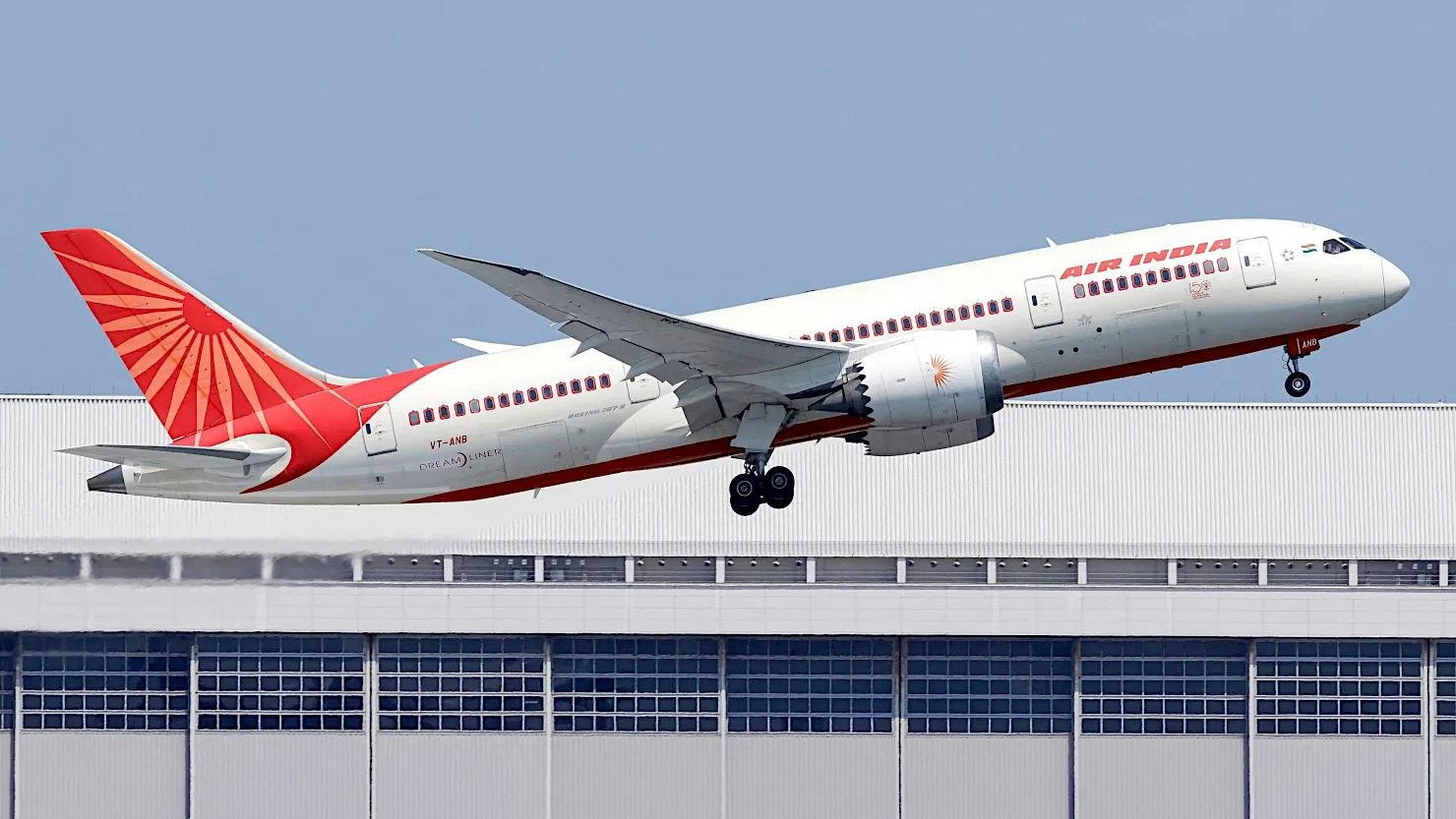
UK Aviation Authority Raised Concerns About Boeing 787 Fuel Switch Before Ahmedabad Crash
UK Aviation Authority Raised Concerns About Boeing 787 Fuel Switch Before Ahmedabad Crash
Early Warnings and Safety Notices
Just weeks prior to the tragic Air India crash in Ahmedabad, the UK Civil Aviation Authority (CAA) issued a safety notice urging operators of the Boeing 787 to conduct thorough inspections of fuel shutoff valves. This advisory highlighted emerging concerns regarding the aircraft’s fuel switch design and the adequacy of existing safety protocols. The warning coincided with increasing scrutiny of Boeing’s fuel system, a focus that was further underscored by a preliminary report from India’s Aircraft Accident Investigation Bureau (AAIB).
Findings from the Investigation
The AAIB’s report revealed critical details from cockpit voice recordings of the ill-fated Air India flight, which indicated confusion among the pilots shortly after takeoff. One pilot questioned why the fuel switch had been turned off, while the other denied having taken such action. The report further stated that both engines lost fuel supply almost simultaneously, within a second of each other, precipitating the crash. Despite the crew’s efforts to reactivate the fuel switches, their attempts came too late to avert the disaster.
The investigation drew particular attention to the manual operation of the cockpit fuel switches. The AAIB suggested that accidental deployment was unlikely, implying that the switches had been deliberately moved to the cut-off position. This finding has intensified scrutiny of Boeing’s fuel system design and raised questions about whether current safety measures are sufficient.
Regulatory Responses and Industry Impact
In response to these concerns, the UK CAA’s notice mandated that Boeing 787 operators perform detailed inspections of fuel shutoff valves, ensuring any identified issues were promptly addressed. The directive required engineering teams or flight crews to verify valve functionality rigorously, with all procedures documented and subject to approval by the CAA’s Flight Operations Inspector.
Similarly, the Indian aviation regulator ordered inspections of cockpit fuel switches on both Boeing 737 and 787 aircraft operating within the country. The US Federal Aviation Administration (FAA) also issued an Airworthiness Directive targeting a potential unsafe condition related to fuel shutoff valves on Boeing aircraft, including the 787. The FAA’s mandate called for daily checks, comprehensive inspections, and, where necessary, replacement of fuel shutoff valve actuators. Operators were instructed to log any failures and rectify defects in accordance with established safety standards.
The sequence of regulatory warnings followed by the crash has intensified debate over Boeing’s safety protocols and the effectiveness of industry oversight. Aviation experts anticipate that the incident may lead to further regulatory reforms and more stringent safety reviews, not only for Boeing but across the wider aviation sector. This heightened scrutiny has prompted insurers to reassess risk profiles and has raised concerns among some passengers regarding the safety of affected aircraft models.
Boeing’s competitors have responded by emphasizing their own safety measures and engineering standards, aiming to reassure airlines and passengers amid growing apprehension. The UK CAA’s early intervention highlights the vital role of proactive regulatory oversight in identifying and mitigating potential hazards before they culminate in tragedy.
As investigations continue, the aviation industry faces mounting pressure to address design vulnerabilities and strengthen safety protocols, with regulators and manufacturers under close observation from both the public and industry stakeholders.
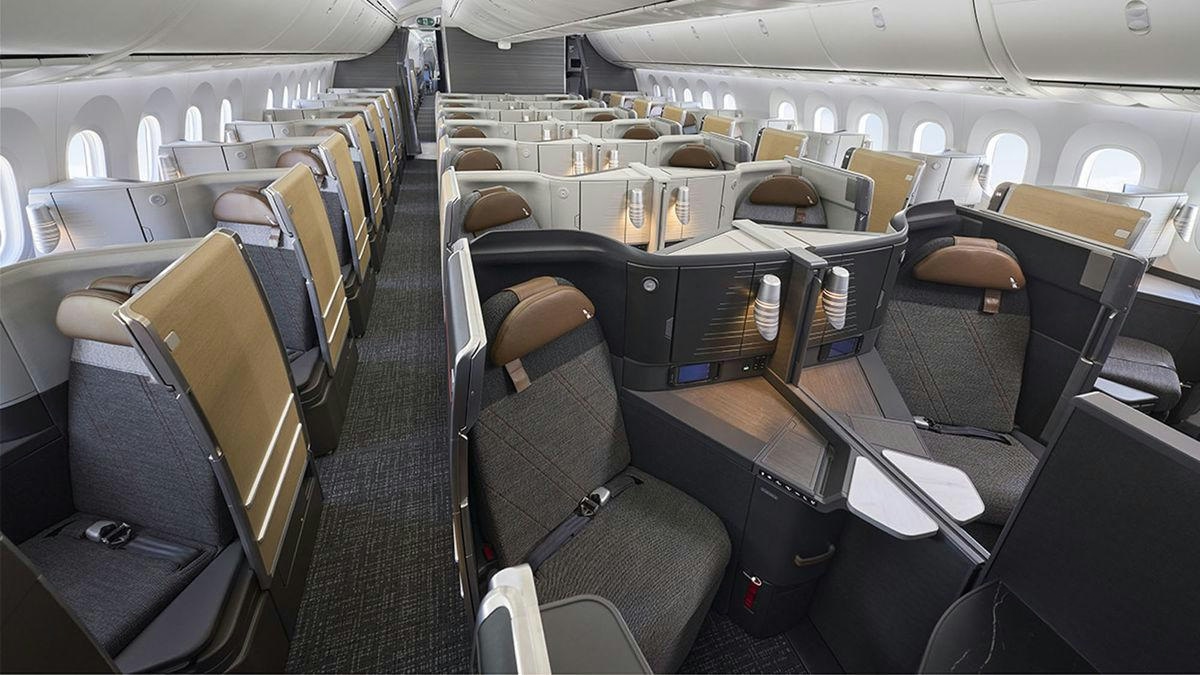
Will Delta Eventually Order Boeing 787 Dreamliners?
Will Delta Eventually Order Boeing 787 Dreamliners?
Speculation is growing within the aviation industry regarding whether Delta Air Lines will place an order for Boeing 787 Dreamliners, particularly the largest -10 variant. Although no official announcement has been made, industry analysts and frequent commentators have identified indicators suggesting that Delta may be approaching an agreement with Boeing. Such a move would represent a notable shift in the airline’s widebody fleet strategy.
Current Fleet Composition and Renewal Strategy
Delta’s recent long-haul fleet renewal efforts have predominantly focused on Airbus aircraft. The airline currently operates 38 Airbus A350-900s, with an additional six on order, and has committed to acquiring 20 A350-1000s. These aircraft serve as the cornerstone of Delta’s transpacific and ultra-long-haul operations. For transatlantic routes, Delta relies on 36 Airbus A330-900neos, supplemented by three more jets on order.
Despite these modern additions, Delta continues to operate a significant number of older widebody aircraft. This includes 42 Airbus A330ceos—comprising 11 A330-200s and 31 A330-300s—with an average age between 16 and 20 years. The airline also maintains a fleet of 60 Boeing 767s, split between 39 767-300ERs and 21 767-400ERs, which average 25 to 30 years in service. The 767-300ERs, in particular, are expected to be retired from international routes by the end of the decade, underscoring the need for replacement aircraft.
The Boeing 787-10: Suitability and Challenges
The Boeing 787-10, the largest variant of the Dreamliner family, offers compelling per-seat economics and is well-suited for transatlantic and South American routes. However, its shorter range compared to other Dreamliner models may limit its deployment on some of Delta’s longest-haul flights. An order for the 787-10 would not only diversify Delta’s widebody fleet but also signal a potential renewal of its partnership with Boeing.
Nevertheless, several challenges remain. The Dreamliner program has encountered production delays and quality control issues in recent years, raising concerns about operational reliability and customer satisfaction. These ongoing issues could influence Delta’s decision-making process, given the airline’s strong emphasis on operational consistency.
Market Implications and Competitive Pressures
Market reactions to a potential Delta order for the 787-10 are likely to be mixed. Some investors and industry analysts may interpret such a move as a positive indicator of Boeing’s recovery and the broader widebody aircraft market, especially in light of Boeing’s projections for strong future demand. Conversely, others may remain cautious due to the Dreamliner’s recent production challenges.
Meanwhile, competitors such as American Airlines have been expanding their Dreamliner fleets, which could exert pressure on Delta to act in order to maintain competitiveness in the long-haul segment. Ultimately, Delta’s decision will depend on a combination of operational requirements, financial considerations, and confidence in Boeing’s ability to deliver reliable aircraft. While the airline has favored Airbus in recent fleet renewals, the imperative to replace aging 767s and preserve flexibility in its international network may make a Boeing 787 order increasingly probable in the coming years.
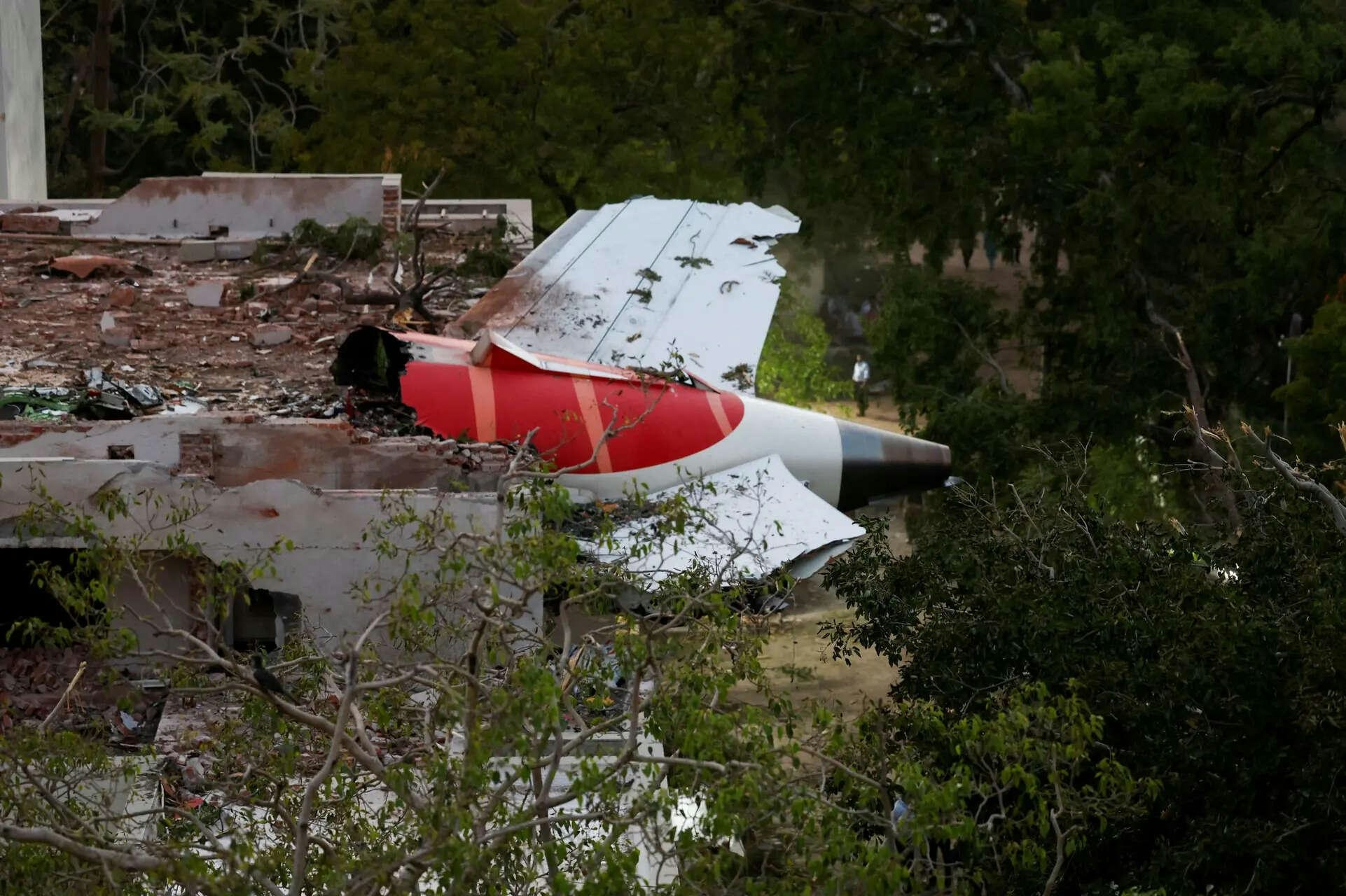
Aviation Expert Reviews AAIB Preliminary Report on Air India Flight AI-171 Crash, Challenges Pilot Error
Aviation Expert Reviews AAIB Preliminary Report on Air India Flight AI-171 Crash, Challenges Pilot Error
The Aircraft Accident Investigation Bureau (AAIB) has published its preliminary report on the crash of Air India Flight AI-171, a Boeing 787, which occurred near Ahmedabad. The report sheds light on the critical moments leading up to the accident, revealing cockpit communications and technical data that are expected to influence the ongoing inquiry.
Sequence of Events and Initial Findings
According to the AAIB, the incident unfolded rapidly within 90 seconds of takeoff. Both engines experienced an unexpected loss of power during the initial climb, resulting in a catastrophic loss of thrust and a subsequent rapid descent. The aircraft’s Enhanced Airborne Flight Recorder captured an urgent exchange between the pilots, with one asking, “Why did you cut off?” and the other responding, “I did not.” This dialogue has drawn attention to the possibility of pilot error, although the full context remains under investigation.
Commercial pilot Rajiv Pratap Rudy, speaking to the media on July 12, emphasized key aspects of the preliminary analysis. He noted that the aircraft took off normally and that the jet fuel switch was correctly positioned. The pilots reported a decrease in engine power shortly after takeoff, and despite their efforts to relight the engines, the cause of the flameout remains unclear. Rudy stressed that further investigation is necessary to determine the precise reasons behind the engine failure and the sequence of events that followed.
Implications for Air India and the Aviation Sector
The preliminary report’s suggestion that fuel supply to the engines was interrupted prior to the crash raises questions about potential pilot error. However, aviation experts urge caution in drawing definitive conclusions until the full investigation is complete. The AAIB is expected to consider a range of factors, including mechanical failure, procedural errors, and human factors.
The crash has significant ramifications for Air India, which now faces increased scrutiny regarding its safety protocols and operational procedures. Industry analysts warn that the incident could damage the airline’s reputation, potentially leading to operational challenges and diminished passenger confidence. Competitors may seek to leverage the situation by highlighting their own safety records.
Beyond Air India, the broader Indian aviation sector is likely to encounter heightened regulatory oversight. Authorities may reassess existing safety standards and enforcement mechanisms in response to the crash. The incident could also impact inbound tourism and business travel, with possible consequences for India’s aviation ambitions and economic growth.
As the investigation progresses, the aviation community and the public await further information that will clarify the causes of the crash and guide future safety improvements.
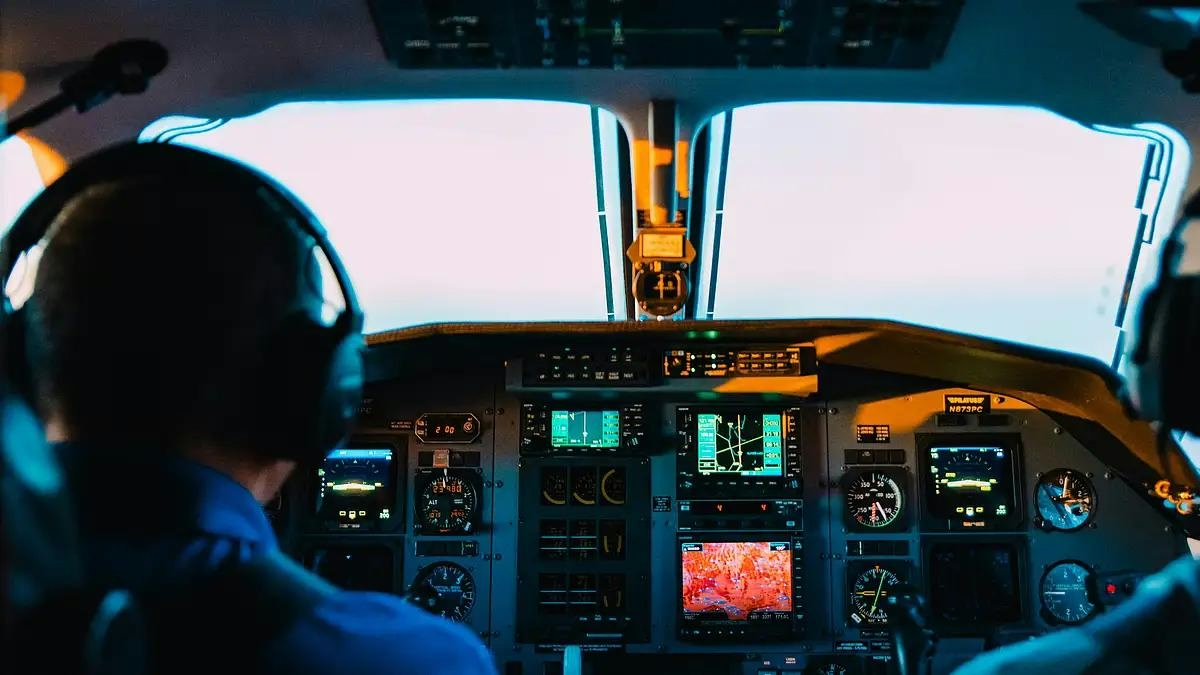
DGCA Directs Boeing Operators to Inspect Fuel Control Switch Locks by July 21
DGCA Mandates Inspection of Fuel Control Switch Locks on Boeing Aircraft by July 21
The Directorate General of Civil Aviation (DGCA) has issued a directive requiring all Indian airlines operating Boeing 787 and 737 aircraft to conduct inspections of the locking mechanisms on their fuel control switches by July 21. This order, released on Monday, underscores the critical importance of adhering to the deadline to maintain the airworthiness and safety of operations. Airlines are also mandated to submit a compliance report within seven days following the completion of these inspections.
Background and Rationale for the Directive
This directive follows intensified regulatory scrutiny in the wake of the June 12 crash involving an Air India Boeing 787-8 Dreamliner. The DGCA’s announcement came shortly after reports indicated that some operators had already initiated checks on the fuel switch locks of Boeing 787 aircraft. A DGCA official clarified that the order applies exclusively to airlines that own these Boeing models, excluding those operating leased aircraft.
The mandate is grounded in findings from the preliminary investigation into the Air India accident, which referenced a 2018 advisory issued by the US Federal Aviation Administration (FAA). That advisory highlighted potential malfunctions in the fuel control switches of certain Boeing 737 and 787 models, recommending inspections to prevent inadvertent movement of the switches. However, the FAA did not designate the issue as an “unsafe condition,” and inspections were not made compulsory at that time.
According to the preliminary report, Air India did not perform inspections following the 2018 FAA advisory, as there was no regulatory requirement to do so. The airline informed investigators that it had replaced the cockpit module containing the fuel control switches twice—once in 2019 and again in 2023—on the aircraft involved in the recent crash. These replacements, however, were unrelated to the fuel switch concerns.
Implications for Airlines and the Aviation Industry
The DGCA’s directive now imposes a mandatory inspection regime for specific Boeing models to address any potential vulnerabilities in the fuel control switch locking mechanisms. This requirement poses operational challenges for airlines, including ensuring timely compliance across their fleets, rectifying any identified issues, and managing potential disruptions to flight schedules. The order is likely to attract heightened attention from investors and passengers alike, while competing carriers may leverage the situation to emphasize their own safety standards and protocols.
Internationally, prominent carriers such as Etihad Airways and Singapore Airlines have also commenced inspections of fuel switch locks on their Boeing 787 fleets. Both the FAA and Boeing continue to assert that the fuel switch locks are safe, which may help mitigate some concerns within the industry. Nonetheless, investigations into the Air India crash remain ongoing, with the global aviation community closely monitoring developments.
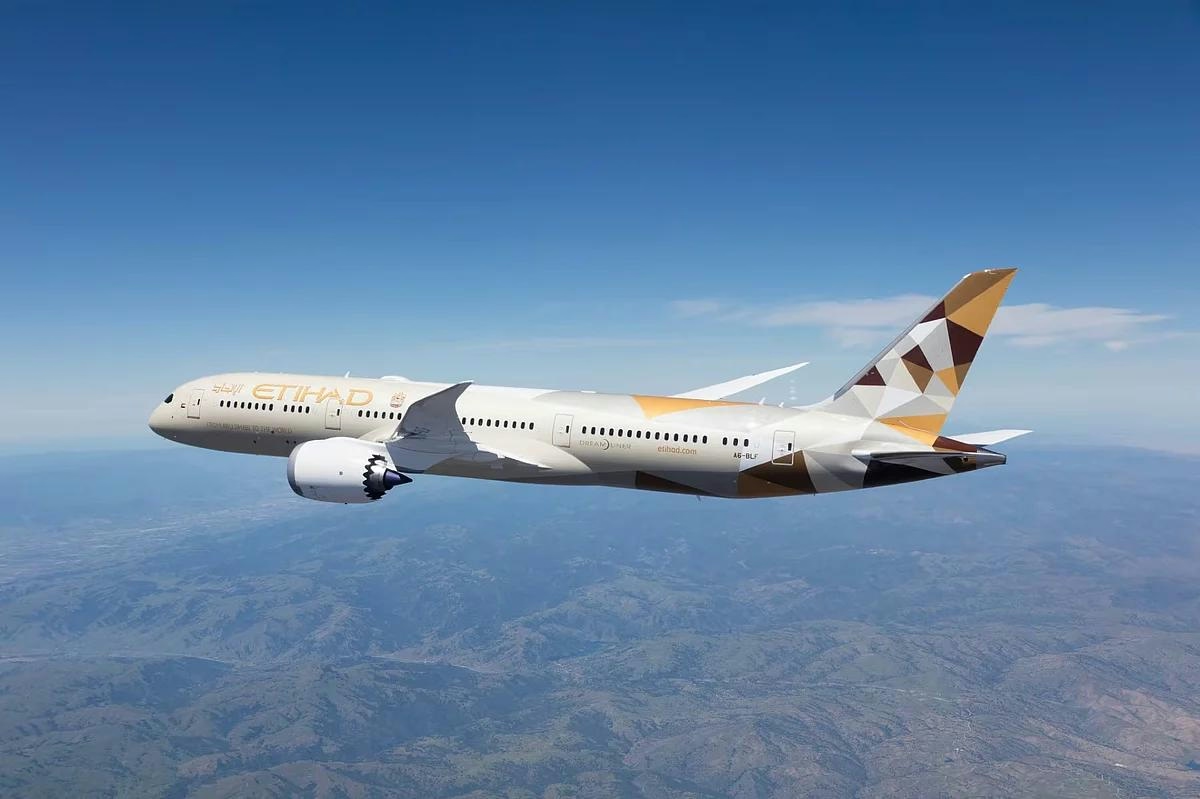
Etihad Orders Inspection of Fuel Systems on Boeing 787 Fleet Following Ahmedabad Crash Report
Etihad Orders Inspection of Fuel Systems on Boeing 787 Fleet Following Ahmedabad Crash Report
Immediate Response to Preliminary Findings
Etihad Airways has mandated urgent inspections of fuel switch systems across its Boeing 787 fleet in the wake of a preliminary investigation into the recent Air India crash near Ahmedabad. The probe suggested that an abrupt fuel cutoff may have contributed to the accident. This directive follows renewed attention to a 2018 Federal Aviation Administration (FAA) advisory, which warned of potential malfunctions in fuel switches on certain Boeing models, including the 787.
The Air India flight AI171, traveling from Ahmedabad to London, crashed just 34 seconds after takeoff, resulting in the deaths of 241 passengers and crew, as well as casualties on the ground when the aircraft struck BJ Medical College and adjacent residential areas. Vishwas Kumar Ramesh, a British national, was the sole survivor. The Aircraft Accident Investigation Bureau (AAIB) determined that both engines shut down mid-flight after the fuel cutoff switches were activated seconds after departure. Cockpit voice recordings have deepened the mystery, capturing one pilot questioning the other about the fuel cutoff, while the second pilot denied any such action.
Safety Precautions and Regulatory Context
In response to these findings, Etihad, headquartered in Abu Dhabi, has issued instructions to its pilots to exercise heightened vigilance when handling fuel switches on Boeing 787 aircraft. Pilots have been advised against placing any objects on the pedestal that might inadvertently engage the switches and to report any anomalies immediately. This precautionary measure comes despite India’s civil aviation regulator stating that the ongoing investigation has not uncovered significant safety concerns related to the Boeing 787 fleet.
The FAA’s 2018 advisory, which has resurfaced following the crash, highlighted a disengaged locking mechanism that could allow the fuel switch to move without being physically lifted, potentially causing unintended engine shutdowns. The AAIB report noted that the inspections recommended by the FAA were not performed on the Air India aircraft, as the advisory was not mandatory.
Ongoing Investigation and Industry Implications
Air India’s CEO, Campbell Wilson, in an internal memo reviewed by Reuters, emphasized that no mechanical or maintenance faults were identified during the investigation and that all required maintenance had been completed. He cautioned against premature conclusions, underscoring that the inquiry remains ongoing.
Families of the victims continue to seek clarity as authorities work to reconstruct the precise sequence of events leading to the crash. While the FAA has not identified any new issues warranting regulatory action at this stage, the incident has reignited debate over the sufficiency of existing safety measures and advisories for Boeing aircraft.
Etihad’s proactive inspections reflect a broader industry vigilance as airlines and regulators await the final conclusions of the Ahmedabad crash investigation.
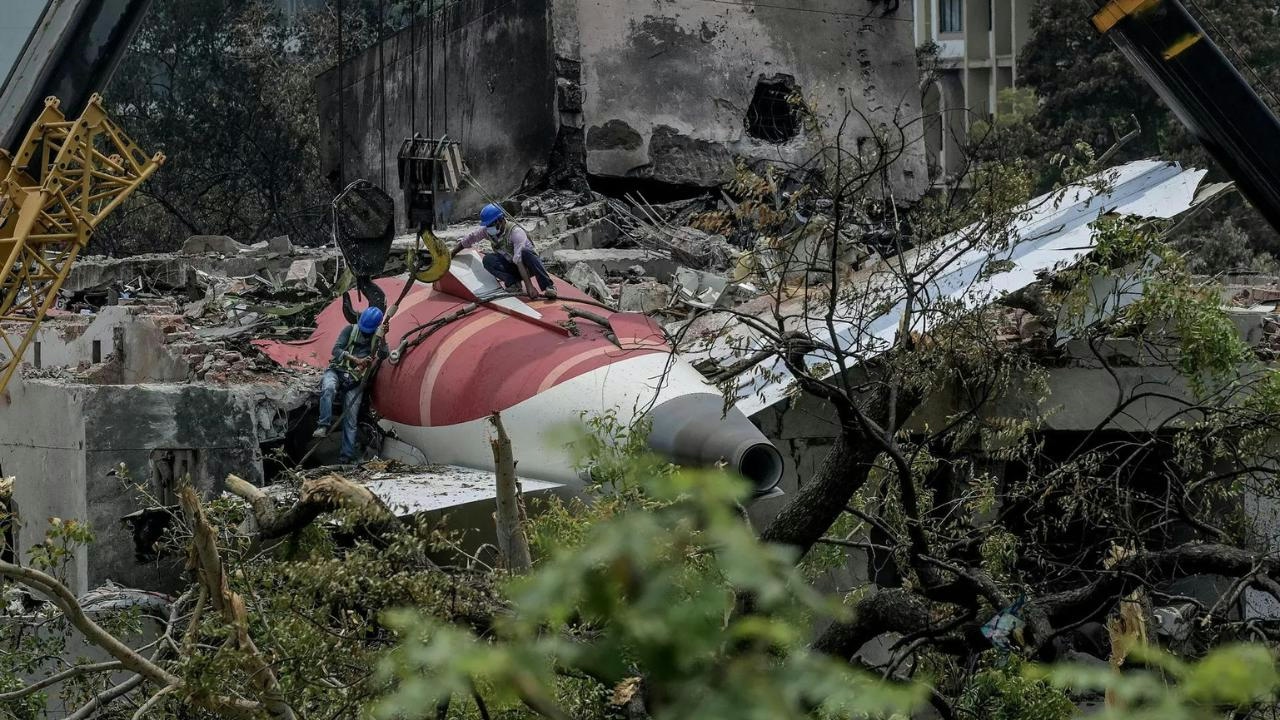
Air India Crash Investigation Explores Causes Beyond Pilot Error
Air India Crash Investigation Explores Causes Beyond Pilot Error
The sudden shutdown of both engines midair led to the catastrophic crash of an Air India flight, prompting an extensive investigation that extends beyond initial assumptions of pilot error. Cockpit voice recordings reveal a tense exchange between crew members questioning the fuel cutoff: “Why did you cut off the fuel?” followed by the response, “I didn’t.” This dialogue has intensified scrutiny over whether the disaster resulted from human error, technical malfunction, or a combination of factors.
Evidence from Flight Data Recorder and Technical Concerns
The recovered flight data recorder has been instrumental in shedding light on the sequence of events. It confirmed that the fuel cutoff switches for both engines were moved from the “RUN” to the “CUTOFF” position just moments before the crash, effectively cutting off fuel supply to the engines. While investigators are examining the possibility of pilot confusion regarding the switches, they are also exploring potential mechanical or design flaws that may have contributed to the incident.
In 2018, the U.S. Federal Aviation Administration (FAA) issued a Special Airworthiness Information Bulletin (SAIB) highlighting potential vulnerabilities in the fuel control switch locking mechanisms on certain Boeing aircraft, including the 787-8 model involved in the Air India flight AI 171 crash. The advisory warned that if the locking mechanism disengaged, the spring-loaded switches could be inadvertently toggled without deliberate crew action. Although Air India did not implement changes in response to this non-mandatory advisory at the time, its relevance has resurfaced amid the ongoing investigation.
Typically, these fuel cutoff switches are safeguarded by physical guard rails and require a deliberate lift-and-shift motion to activate, making accidental engagement highly unlikely. However, if the locking system fails—due to factors such as vibration, wear, or inadequate maintenance—both switches could theoretically be moved to the “CUTOFF” position unintentionally. Investigators are now considering scenarios involving mechanical failure, electrical faults, or software glitches that might cause both switches to shift without pilot input.
Regulatory Response and Global Safety Implications
The crash, which claimed at least 270 lives, has prompted the Indian government to initiate an urgent inspection of all Boeing 787 aircraft within its fleet. Regulators, airlines, and manufacturers worldwide are re-evaluating cockpit safeguards previously regarded as fail-safe. Aviation experts caution that while accidental toggling of both fuel switches is considered nearly impossible under normal circumstances, rare conditions such as intense vibration or turbulence during critical phases of flight could interfere with cockpit controls if locking mechanisms are compromised.
Notably, investigators found both fuel switches in the “RUN” position in the wreckage, indicating that the flight crew attempted to restore engine power in the final moments. Unfortunately, the aircraft was already too low to recover.
Although the final investigation report has yet to be released, it is evident that fuel control switch movements can, in rare instances, occur outside direct pilot control due to system flaws or overlooked safety advisories. This tragedy has underscored the critical importance of adhering to safety bulletins and maintaining rigorous inspection protocols, particularly for essential cockpit components.
Until the investigation concludes, no definitive cause has been established. Nevertheless, the case of AI 171 is driving a global reassessment of cockpit safety measures, emphasizing that when seconds count, even a single unintended switch movement can have devastating consequences.
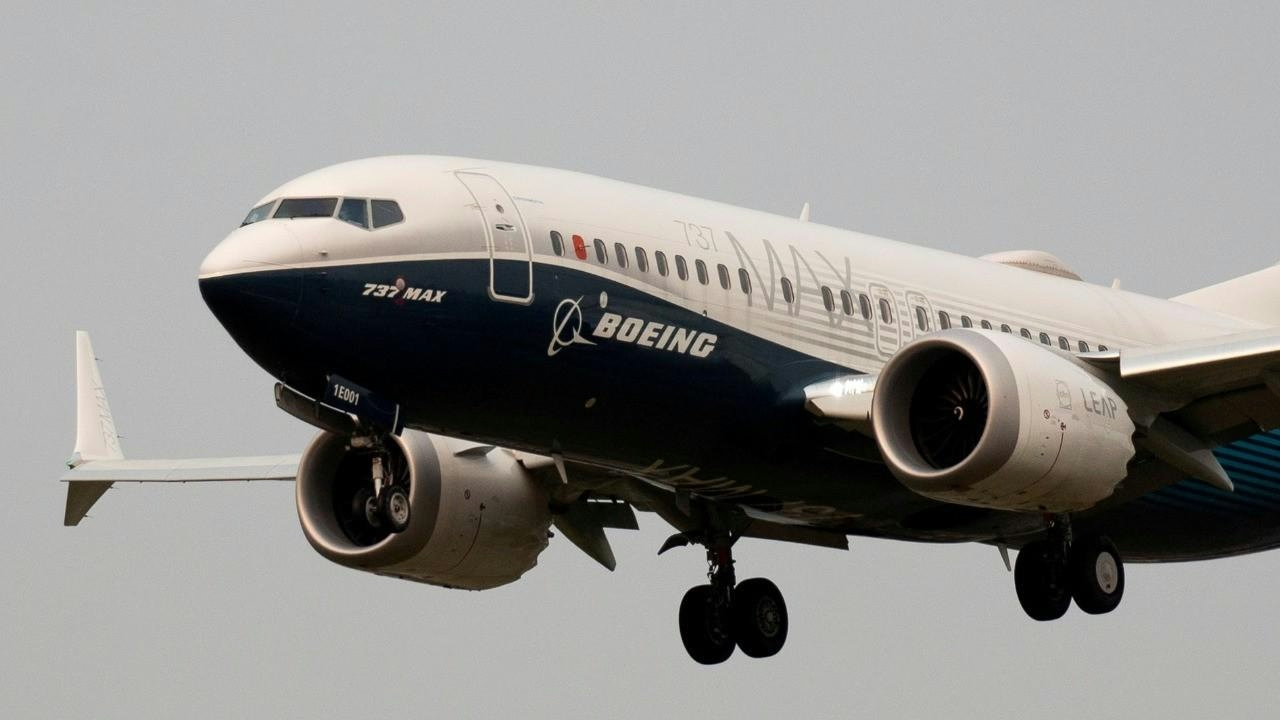
DGCA Mandates Fuel System Inspections for Boeing 787 and 737
DGCA Orders Mandatory Fuel System Inspections for Boeing 787 and 737 Fleets
The Directorate General of Civil Aviation (DGCA) has issued a directive requiring all Indian airlines to conduct thorough inspections of the fuel system locking mechanisms on their Boeing 787 and 737 aircraft. This mandate follows the Aircraft Accident Investigation Bureau’s (AAIB) report on the recent Air India AI-171 crash, which raised concerns about the operation of the aircraft’s fuel control switches. The AAIB report noted that the engine fuel switches were disengaged prior to the accident, prompting questions about existing safety protocols and cockpit procedures.
Airlines are required to complete these inspections and submit detailed reports to regional DGCA offices by July 21. This directive echoes a 2018 advisory from the US Federal Aviation Administration (FAA), which had previously identified risks related to the potential disengagement of fuel control switch locking features on various Boeing models. In light of the AAIB’s findings, several international carriers, including Etihad Airways and Lufthansa, have initiated similar inspections of their Boeing fleets. These airlines have also issued guidance urging pilots to exercise heightened caution when handling fuel control switches, particularly on Boeing 787 aircraft.
Industry Response and Ongoing Investigations
Despite the increased scrutiny, both the FAA and Boeing have privately assured airlines and regulatory bodies worldwide that there is no immediate safety threat associated with the engines or fuel switch locks on Boeing 787s. Recent inspections have not revealed any significant safety deficiencies within the 787 fleet. Nevertheless, Boeing remains under intense global examination, especially following a separate incident involving the 737 MAX 9. This case is currently under investigation by the US National Transportation Safety Board (NTSB), which is probing potential regulatory oversights.
The AAIB report has ignited debate within the aviation community, particularly concerning the role of the flight crew in the Air India crash. Pilots’ associations have strongly rejected implications that the crew was responsible for the incident, arguing that attributing blame to deceased pilots is unjust. They have called for the inclusion of pilot representatives and technical experts in the ongoing investigation to ensure a fair and comprehensive review. Captain Sam Thomas, president of the Air Line Pilots Association (ALPA) India, criticized the AAIB report for its lack of transparency and consistency, highlighting that the report was unsigned and selectively leaked. He has advocated for a judicial inquiry involving subject matter experts and pilots, underscoring the complexity of modern aircraft systems.
“We don’t have confidence in this report. It creates more confusion and says nothing,” Thomas remarked, disputing suggestions that the pilots intentionally disengaged the fuel switches. He emphasized that verifying fuel control switches is a routine part of the pilot checklist, especially when addressing engine thrust issues.
As the DGCA and Indian airlines move forward with the mandated inspections, the aviation sector continues to navigate the delicate balance between stringent safety oversight and demands for transparent, thorough investigations into recent Boeing-related incidents.
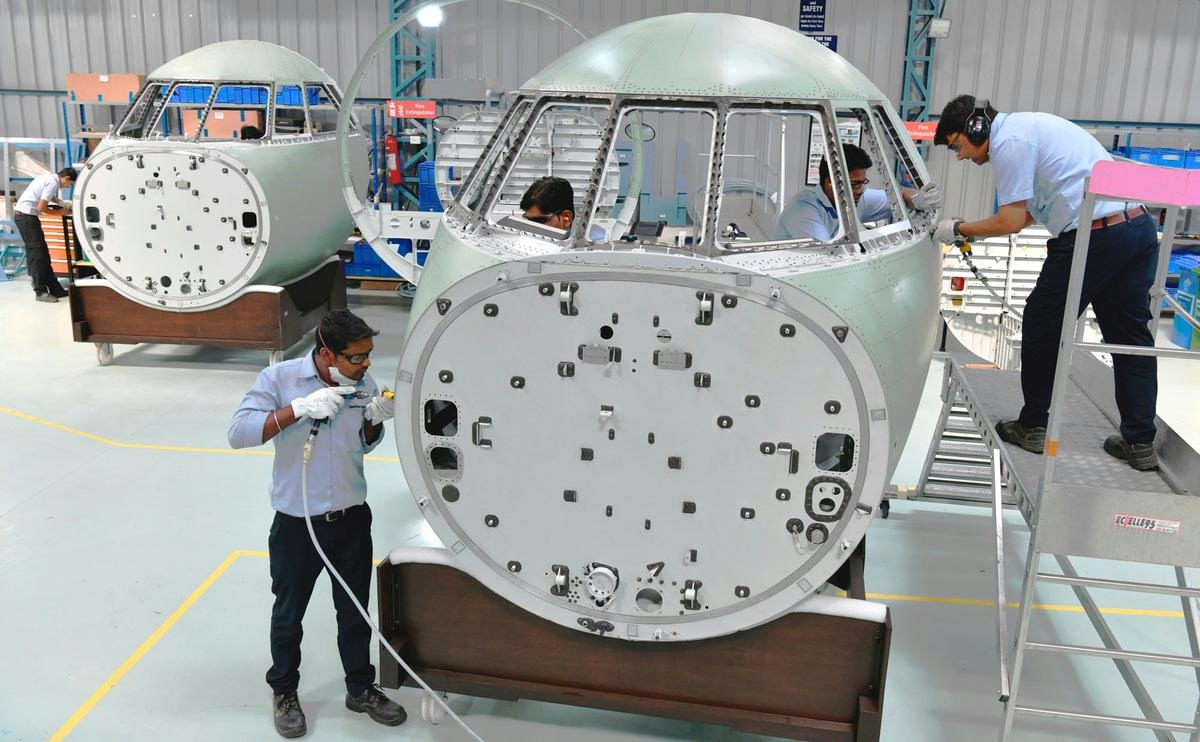
Reliance Defence Partners with US Firm for Military Aircraft MRO in Nagpur
Reliance Defence Partners with US Firm to Establish Military Aircraft MRO Facility in Nagpur
Reliance Infrastructure, under the leadership of Anil Ambani, has announced a significant expansion into the defence sector with plans to develop a maintenance, repair, and overhaul (MRO) facility for military aircraft and equipment at the Mihan Special Economic Zone (SEZ) in Nagpur. This initiative follows the company’s recent decision to manufacture Falcon 2000 business jets in the city and represents the first defence-focused MRO facility in Nagpur, as well as the third of its kind in the region.
Strategic Partnership and Facility Scope
Reliance Defence, a wholly owned subsidiary of Reliance Infrastructure, has entered into a strategic partnership with US-based Coastal Mechanics Inc (CMI) to develop the MRO facility. The collaboration is designed to capitalize on substantial business opportunities, particularly in extending the operational lifespan of the Indian Air Force’s (IAF) ageing fleet. Reliance Defence estimates the potential market value of this venture at approximately ₹20,000 crore over the next decade.
The proposed MRO facility will service a diverse range of platforms, including British-made Jaguars, Russian MiG-29s, legacy L-70 anti-aircraft guns, and Apache attack helicopters. The project is expected to require an initial investment of ₹500 crore and is projected to generate around 200 jobs upon commencement. Reliance Defence currently holds over 180 acres within the Mihan-SEZ, providing ample space for future expansion. This landholding also supports the company’s ongoing collaboration with French aerospace giant Dassault for Falcon jet production.
Phased Development and Operational Focus
Reliance Defence plans to adopt a phased approach, beginning with a comprehensive assessment of the Indian defence forces’ requirements before gradually expanding the facility’s capabilities to cover a broad spectrum of systems. The MRO is anticipated to handle over 100 Jaguars and MiG-29s or Bisons each—aircraft that have been in service with the IAF for more than three decades. This aligns with India’s evolving defence strategy, which emphasizes life cycle extension over outright asset replacement. The facility aims to address challenges related to obsolescence management and to upgrade older platforms with the latest technologies.
In addition to servicing domestic defence forces, Reliance Defence is targeting export markets with ambitions to become one of India’s top three exporters of defence products. This project is poised to be the first in the country capable of overhauling and extending the operational life of aircraft from multiple international origins. The company projects annual revenues of ₹2,000 crore from the MRO, serving not only the IAF but also the Indian Navy and Army.
Challenges and Industry Context
The partnership with CMI brings considerable expertise, particularly in maintaining older fleets, drawing on CMI’s experience with the US Department of Defense. The facility aims to fill critical gaps left when original equipment manufacturers discontinue support for certain subsystems. Reliance Defence does not foresee direct competition with the IAF’s existing base repair depots, as its focus will be on regular overhauls and life cycle extensions, thereby complementing the armed forces’ current maintenance infrastructure.
Nonetheless, the venture faces several challenges, including navigating complex regulatory approvals, ensuring compliance with international standards, and managing the logistical demands of large-scale aircraft maintenance. The MRO sector is highly competitive, with recent trends indicating increased liquidity demands for new-generation engine leasing and strategic expansions by global players such as Embraer in India. These dynamics are likely to attract close scrutiny from defence analysts and investors, while also prompting competitive responses from other firms seeking to establish or enhance their own MRO capabilities.
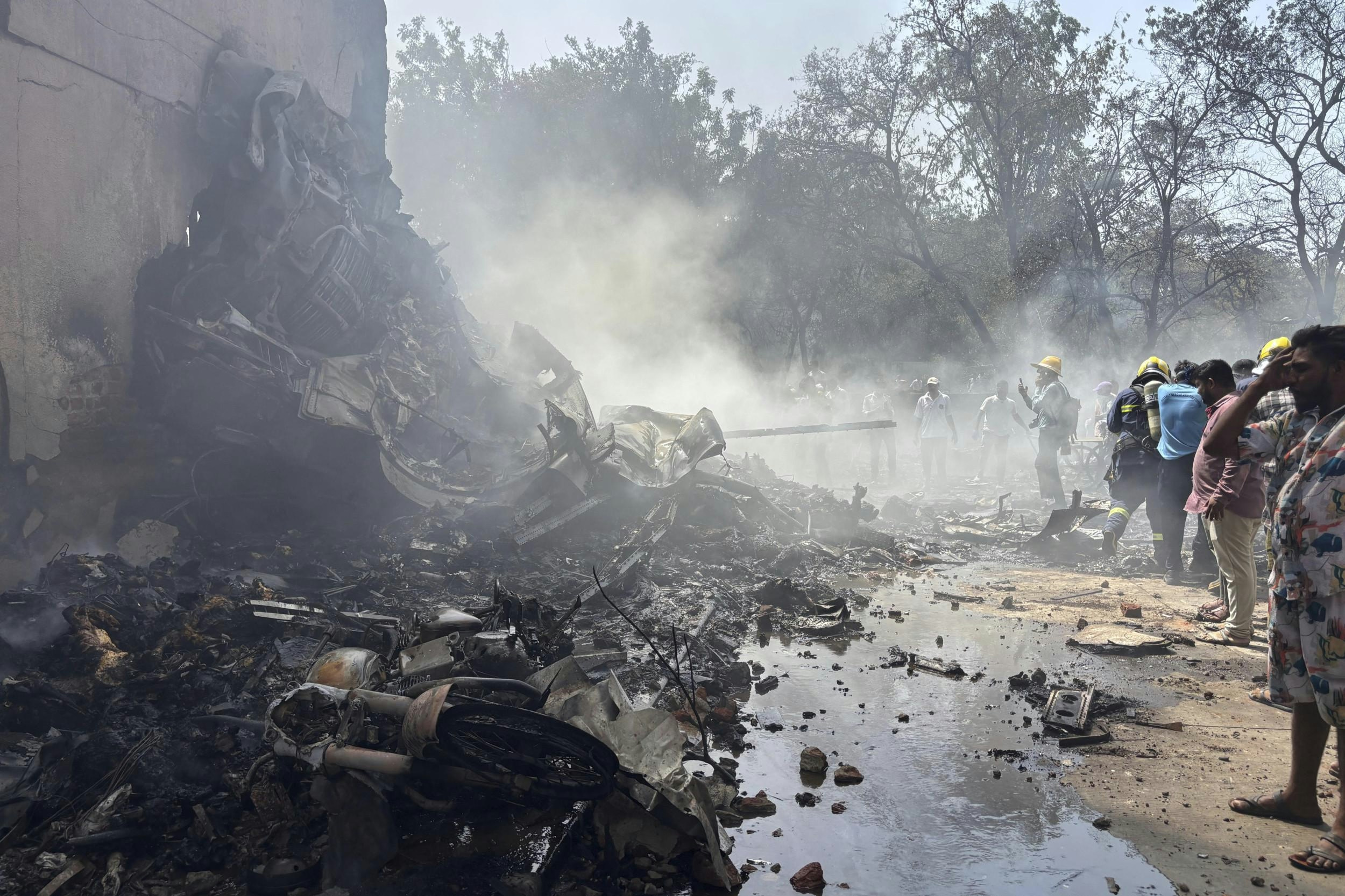
India Commercial Pilots’ Association Rejects Suicide Theory in AI 171 Crash Report
India Commercial Pilots’ Association Rejects Suicide Theory in AI 171 Crash Report
Rejection of Pilot Suicide Speculation
The India Commercial Pilots’ Association (ICPA) has issued a strong condemnation of the speculation suggesting pilot suicide as a cause of the Air India AI 171 crash. This statement followed the release of the preliminary report by the Aircraft Accident Investigation Bureau (AAIB) on Saturday. The tragic incident occurred on June 12 in Ahmedabad, resulting in the deaths of all passengers and crew except one.
The AAIB’s initial findings revealed that three seconds after takeoff, the fuel supply to both engines of the London-bound Air India Boeing 787 was abruptly cut off. The report indicated that the fuel cutoff switches for both engines were moved from the “run” to the “cutoff” position in rapid succession. However, the report did not include the full cockpit voice recorder transcript, providing only a brief exchange in which one pilot questioned the other about the fuel cutoff, and the latter denied having done so.
ICPA’s Response and Call for Responsible Reporting
In a statement released on Sunday, the ICPA, which represents pilots from the former Indian Airlines, expressed deep concern over what it described as “reckless and unfounded insinuation of pilot suicide.” The association emphasized that there is no basis for such a claim at this stage and criticized the premature invocation of such a serious allegation based on incomplete or preliminary information. The ICPA highlighted that such speculation is not only irresponsible but also deeply insensitive to the victims and their families.
The association reaffirmed its unwavering support for the flight crew of Air India flight AI 171, underscoring that pilots undergo rigorous psychological and professional screening, recurrent training, and operate under stringent safety and mental fitness standards. The ICPA’s statement stressed that casually suggesting pilot suicide without verified evidence constitutes a gross violation of ethical reporting and undermines the dignity of the profession.
The ICPA further urged respect for the ongoing investigative process, asserting that any speculation of this nature is unacceptable and must be condemned. The association maintained that the crew acted in accordance with their training and responsibilities under challenging circumstances and deserve support rather than vilification.
Broader Impact and Ongoing Investigation
The controversy surrounding the crash has had wider repercussions. Market reactions have been mixed, with some investors expressing concerns about Air India’s safety record, while others remain optimistic about the airline’s prospects. Competitors have responded by intensifying scrutiny of Air India’s operational practices and safety protocols, while simultaneously emphasizing their own safety measures to reassure passengers.
Meanwhile, families of the victims have raised allegations against Air India, accusing the airline of exerting pressure during compensation negotiations. Several family members claimed that the airline threatened to withhold compensation if they did not complete a required questionnaire, adding complexity to the aftermath of the tragedy.
As the official investigation continues, the ICPA and other stakeholders have called for restraint and objectivity, emphasizing the necessity of a thorough and unbiased inquiry before any conclusions are drawn regarding the cause of the crash.
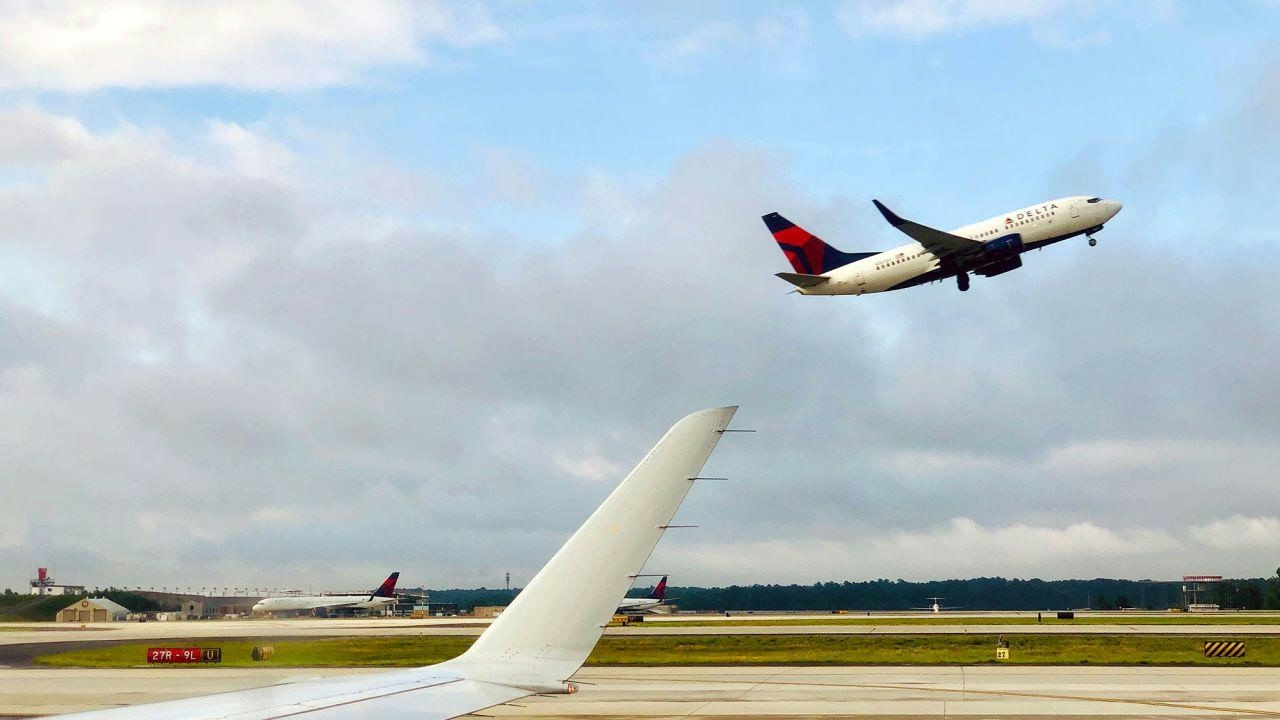
Delta Air Lines Resumes Nonstop Flights to Hong Kong After Eight Years
Delta Air Lines Resumes Nonstop Flights to Hong Kong After Eight Years
Delta Air Lines is poised to re-enter the competitive trans-Pacific market with the resumption of nonstop flights between Los Angeles International Airport (LAX) and Hong Kong International Airport (HKG). This marks the airline’s return to Hong Kong after an eight-year hiatus and signals a renewed commitment to expanding its global reach by directly connecting the U.S. West Coast to one of Asia’s foremost financial centers.
Strategic Reentry into a Crowded Market
Although Delta has yet to officially announce the launch date or flight frequency, industry insiders suggest the announcement is imminent. The service is expected to be operated using Delta’s Airbus A350-900 aircraft, which offers long-range capabilities alongside enhanced passenger comfort. The LAX-HKG route is currently dominated by established carriers, with United Airlines operating two daily flights and Cathay Pacific offering three. American Airlines previously served the route but withdrew prior to the pandemic due to underperformance. Delta’s return is anticipated to intensify competition, raising questions about how the airline will distinguish itself in a market already saturated with strong incumbents.
Unlike its competitors, Delta lacks a substantial regional network or strong local partnerships in Hong Kong. Cathay Pacific benefits from its extensive Asian network and membership in the oneworld alliance, while United leverages its Star Alliance connections. Delta, in contrast, will primarily depend on its domestic network at LAX to feed traffic onto the Hong Kong route. This approach represents a strategic shift away from Delta’s earlier reliance on Seoul Incheon (ICN) as a connecting hub for Asia, reflecting a broader realignment of its Asia-Pacific strategy.
Challenges and Competitive Dynamics
Delta’s return to Hong Kong faces several challenges. The airline’s recent introduction of “Basic” premium cabin fares has attracted criticism from some passengers, potentially diminishing its appeal among business travelers on this long-haul route. Furthermore, United Airlines may respond to Delta’s reentry with fare adjustments or service enhancements to protect its market share. The competitive environment is further complicated by Delta’s recent expansion of new routes from Seattle to Europe and its unbundling of business class offerings—strategies that have drawn comparisons to those employed by other carriers such as Alaska Airlines.
Market analysts will be closely monitoring how Delta positions itself amid these dynamics. The airline’s ability to attract passengers without the advantage of a strong regional partner in Hong Kong, and in the face of aggressive competition, will serve as a critical test of its trans-Pacific ambitions.
Delta’s planned nonstop service between Los Angeles and Hong Kong not only marks a significant comeback for the airline but also underscores the evolving strategies of U.S. carriers as they navigate the post-pandemic aviation landscape. As Delta prepares to challenge established players on one of the world’s busiest long-haul routes, the stage is set for renewed competition and shifting alliances in trans-Pacific travel.
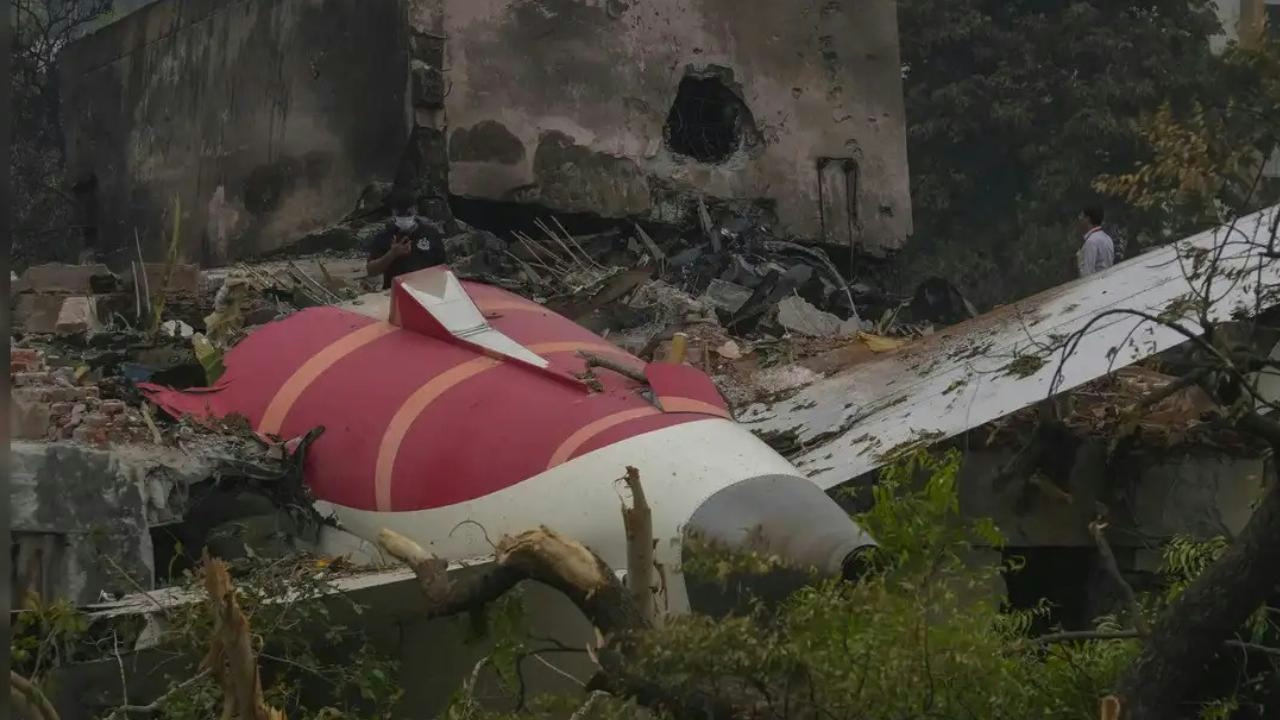
AAIB Releases Full Report on Air India Flight AI171 Crash
AAIB Releases Full Report on Air India Flight AI171 Crash
The Aircraft Accident Investigation Bureau (AAIB) has published its comprehensive report on the crash of Air India flight AI171, a Boeing 787-8 that tragically went down shortly after takeoff from Ahmedabad on June 12. The flight was en route to London Gatwick when the aircraft collided with a medical college hostel mere seconds after departure, resulting in the loss of 260 lives, encompassing nearly all passengers and crew onboard.
Details of the Incident and Investigation
The report reveals that the aircraft was carrying 54,200 kilograms of fuel, with a takeoff weight of 213,401 kilograms, both within the prescribed operational limits. The plane lifted off at 13:08:39 IST. Shortly thereafter, the engine fuel control switches were turned off and then reactivated within a one-second interval. At 13:09:05 IST, a pilot issued a distress call declaring “Mayday, mayday, mayday.” No further communication was received by Air Traffic Control (ATC) before the crash occurred.
Investigators employed drones to document the wreckage, which was subsequently relocated to a secure area near the airport for detailed examination. Both engines were recovered and placed under quarantine in a hangar. Fuel samples taken from the aircraft’s bowsers and tanks underwent testing at the Directorate General of Civil Aviation (DGCA) laboratory and were found to meet satisfactory standards. The AAIB report does not call for immediate action against the aircraft or engine manufacturers.
Implications for the Aviation Sector
The release of the full report is poised to have significant repercussions for the Indian aviation industry. The crash exacerbates existing challenges within India’s aviation insurance market, intensifying pressure on insurers and reinsurers both domestically and internationally. Industry analysts expect a reassessment of risk profiles, which may lead to increased insurance premiums.
Air India faces immediate operational challenges in managing compensation and relief efforts for the victims’ families, alongside addressing the reputational damage stemming from the disaster. The airline’s strategic plans for expansion, particularly into international markets such as Australia, may encounter obstacles as it seeks to rebuild public trust.
The broader Indian aviation sector is also under heightened scrutiny, with regulatory authorities anticipated to review and potentially tighten safety protocols and operational standards in response to the report’s findings. Competing carriers, including IndiGo, may attempt to leverage Air India’s difficulties to strengthen their market positions, potentially altering competitive dynamics in the near term.
As the industry grapples with the consequences of the AAIB’s findings, stakeholders are preparing for a period marked by regulatory, financial, and operational challenges following one of the most devastating aviation disasters in India’s history.
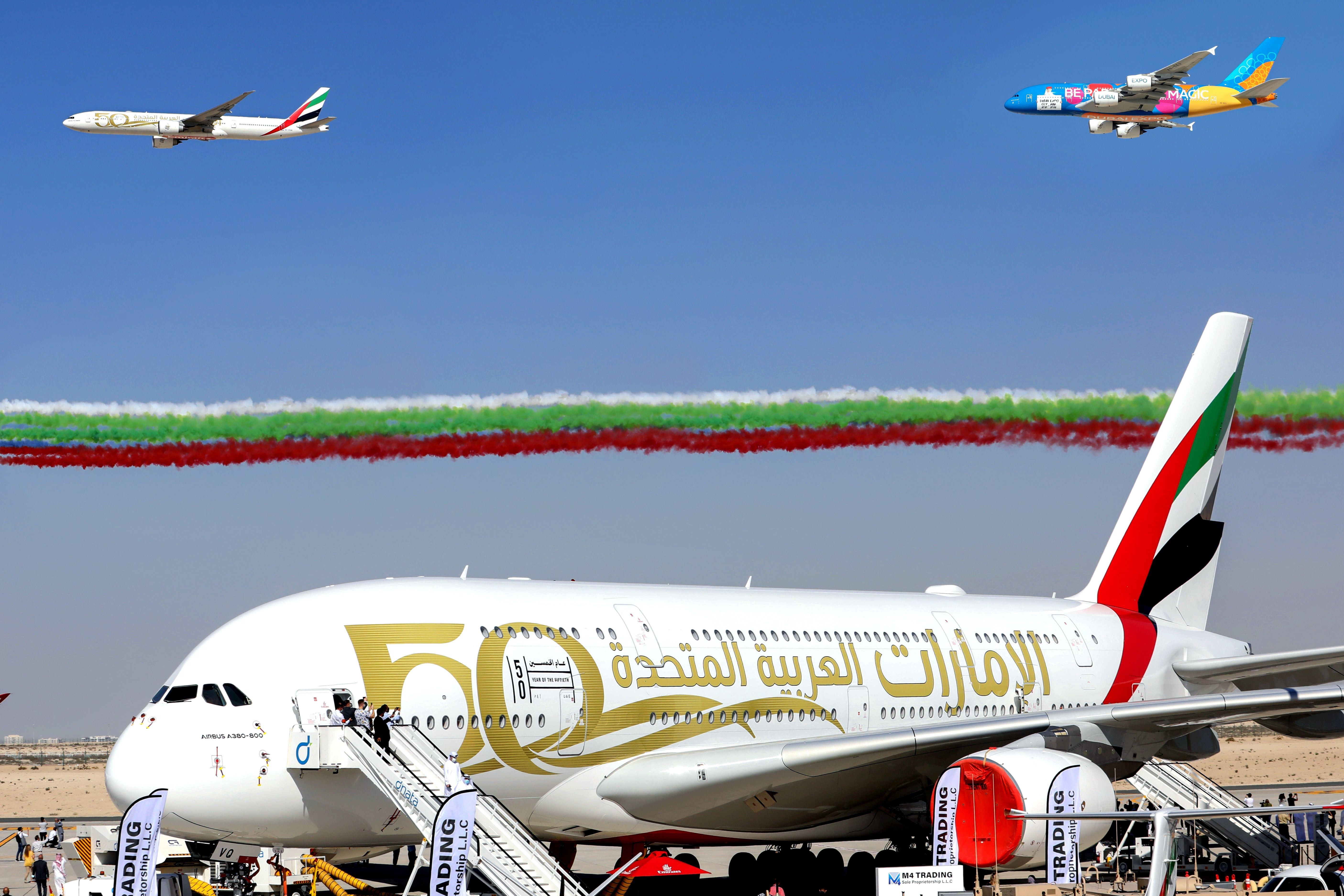
How the Boeing 777-300ER Compares to the Airbus A380 in Size
How the Boeing 777-300ER Compares to the Airbus A380 in Size
When discussing the largest commercial aircraft in operation today, the Boeing 777-300ER and the Airbus A380 are the two dominant models. Each represents a significant achievement in aerospace engineering but caters to different operational needs and market demands. Their differences in size, passenger capacity, and intended use highlight the distinct roles they play within global aviation.
Size and Capacity: A Detailed Comparison
The Airbus A380 holds the distinction of being the largest passenger airliner ever constructed. Its unique double-deck design enables it to accommodate up to 853 passengers in an all-economy configuration, or approximately 575 passengers in a more typical three-class layout. By contrast, the Boeing 777-300ER, the largest variant within the 777 family, can seat a maximum of 550 passengers in a high-density arrangement, though it more commonly carries around 396 passengers in a three-class configuration.
Physically, the A380 exceeds the 777-300ER in nearly every dimension except length. The 777-300ER measures 242 feet 4 inches (73.9 meters) in length, slightly longer than the A380’s 238 feet 7 inches (72.7 meters). However, the A380’s wingspan extends to 261 feet 8 inches (79.8 meters), significantly wider than the 777-300ER’s 212 feet 7 inches (64.8 meters). The A380 also stands taller at 79 feet (24.1 meters), compared to the 777-300ER’s height of 61 feet (18.5 meters). In terms of maximum takeoff weight, the A380’s 1,234,600 pounds (560,000 kilograms) far surpasses the 777-300ER’s 775,000 pounds (351,534 kilograms). These dimensions underscore the A380’s dominance in size and capacity, despite the 777-300ER’s advantage in length.
Operational Roles and Market Positioning
The Boeing 777-300ER was engineered to serve long-haul routes with a focus on operational efficiency and flexibility. Its twin-engine design allows it to operate from a broader range of airports, including those unable to accommodate the larger A380. This versatility, combined with lower operating costs and a moderate passenger capacity, makes the 777-300ER a preferred choice for airlines seeking to balance capacity with economic performance.
Conversely, the Airbus A380 was developed to maximize passenger volume on high-density international routes, primarily connecting major global hubs. Its immense size necessitates specialized airport infrastructure, limiting the number of airports capable of handling the aircraft. Nevertheless, the A380 remains a favored option for carriers aiming to transport large numbers of passengers efficiently on heavily trafficked routes.
Industry Response and Future Developments
The market’s response to these aircraft reflects their strategic roles within the aviation sector. Emirates, the largest operator of the A380, continues to invest in the superjumbo, with plans to upgrade its first-class suites and extend the aircraft’s operational lifespan through 2040. The airline has also expressed interest in Boeing’s developments, including visits to Boeing’s assembly facilities to monitor progress.
Meanwhile, other airlines are reassessing their fleet compositions. Kenya Airways, for example, is considering reintroducing the 777-300ER alongside exploring the Boeing 737 MAX, demonstrating the ongoing relevance of the 777 family. In response to Boeing’s advancements, Airbus is developing a stretched version of its A350 to compete directly with the forthcoming Boeing 777-9, highlighting the competitive dynamics shaping the large aircraft market.
Conclusion
While the Airbus A380 remains the world’s largest passenger aircraft by nearly every measure except length, the Boeing 777-300ER continues to hold a vital position in commercial aviation due to its versatility and efficiency. Both aircraft exemplify the evolving demands of the industry and maintain prominent roles in the global air travel landscape.

Delta Air Lines Prohibits Personal AI Smart Glasses for Flight Attendants
Delta Air Lines Bans Personal AI Smart Glasses for Flight Attendants
Delta Air Lines has announced a new policy prohibiting flight attendants from using personal AI-powered smart glasses while on duty. This measure, effective immediately across the airline’s global operations, underscores Delta’s commitment to safeguarding passenger privacy and maintaining operational safety amid the rapid proliferation of wearable technology. The decision reflects mounting concerns within the aviation sector regarding data security and the potential for unauthorized recording devices in the cabin environment.
Privacy and Security Concerns Amid Technological Advances
Smart glasses, including popular models such as Apple Vision Pro and Meta Ray-Ban, as well as emerging devices from companies like TDK and Xiaomi, are increasingly popular for their real-time AI assistance, voice command functionality, facial recognition, and discreet video recording capabilities. While these features offer promising enhancements to workflow and customer service, they also raise significant challenges related to privacy, data protection, and compliance with diverse international regulations. These issues are particularly acute on international flights, where legal standards vary widely.
Delta’s policy emerges as the aviation industry continues to wrestle with integrating new technologies without compromising safety or passenger trust. Although airlines such as Air New Zealand and Virgin Atlantic have experimented with augmented reality wearables to improve crew efficiency, these initiatives have not led to widespread adoption. By formally banning personal smart glasses for frontline staff, Delta positions itself as one of the first major carriers to establish a clear boundary on the use of such devices, setting a precedent for technology governance in aviation.
Balancing Innovation with Passenger Trust
The airline’s stance has sparked debate among technology advocates and industry observers. Proponents argue that smart glasses represent a significant opportunity for inflight service innovation, enabling hands-free translation, instant access to passenger information, and more efficient crew workflows. Conversely, many passengers express unease about the possibility of being recorded without their consent, raising important questions about comfort and privacy during flights. Delta’s policy seeks to navigate these competing interests by prioritizing the safety and trust of both passengers and crew members.
Market reactions to the ban have been mixed. Some industry participants view Delta’s approach as a prudent safeguard against privacy risks, while others caution that it may hinder the adoption of potentially transformative tools. Competitor airlines may respond in varied ways, either by implementing similar restrictions to address privacy concerns or by selectively embracing smart glasses to differentiate their service offerings and appeal to technology-savvy travelers.
Looking forward, Delta has indicated openness to introducing airline-approved wearable technology in the future, contingent upon strict adherence to privacy protections and regulatory requirements. As the market for smart glasses continues to expand, airlines will face the complex task of balancing the benefits of these devices with the imperative to protect passenger rights and ensure safety.
Delta’s cautious and transparent policy highlights the intricate challenges of incorporating cutting-edge technology into aviation. The airline’s decision reinforces the principle that passenger trust, privacy, and safety must remain paramount as the industry evolves.
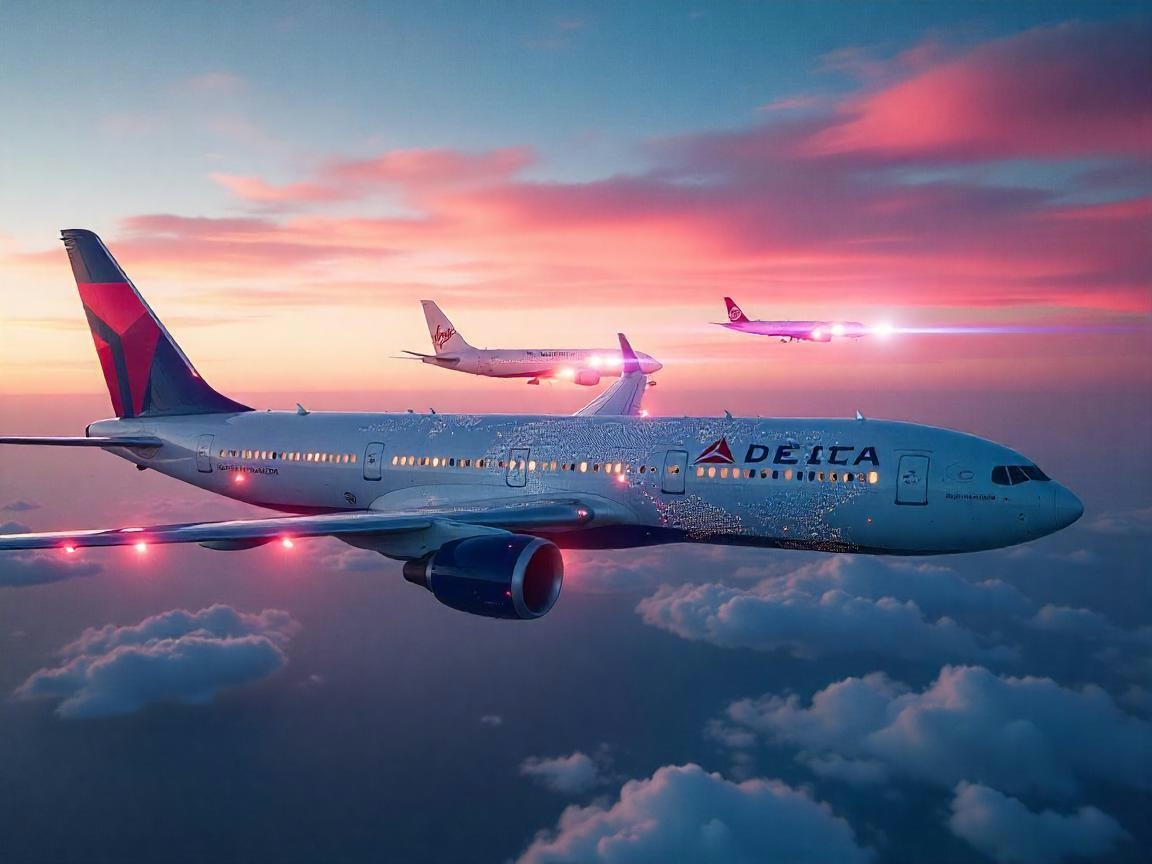
Delta Air Lines Partners with United, Azul, Virgin Atlantic, Royal Air Maroc, and Lufthansa to Implement Artificial Intelligence
Delta Air Lines and Global Partners Embrace Artificial Intelligence to Revolutionize Ticket Pricing
Delta Air Lines has announced a strategic partnership with United Airlines, Azul Airlines, Virgin Atlantic, Royal Air Maroc, and Lufthansa to implement advanced artificial intelligence (AI) technologies aimed at transforming airline ticket pricing and service delivery. This collaboration marks a significant shift in the aviation industry, as carriers seek to replace traditional pricing models with AI-driven algorithms that analyze vast amounts of data in real time.
AI-Driven Pricing: A New Frontier in Airline Competition
Historically, airlines have relied on complex but static systems that consider factors such as seasonality, demand fluctuations, and competitor pricing to determine fares. Delta’s partnership with Tel Aviv-based technology firm Fetcherr introduces a sophisticated AI engine capable of processing billions of data points to adjust ticket prices dynamically, often on a minute-by-minute basis. This system enables airlines to optimize pricing strategies more efficiently than human revenue managers, potentially reducing manual intervention by up to 60% while maximizing revenue yields.
The adoption of AI allows these carriers to respond instantaneously to market changes, competitor actions, and shifts in consumer demand, providing a critical competitive edge in an increasingly volatile market environment. The integration of such technology signals a new era where pricing agility and precision become central to airline profitability.
Personalized Pricing and Its Implications for Travelers
The deployment of AI also introduces the possibility of hyper-personalized pricing models. Beyond traditional variables like seat availability and travel dates, fares may be tailored to individual traveler profiles, incorporating data such as browsing behavior, loyalty program status, travel frequency, and booking patterns. This could result in differentiated pricing strategies where elite frequent flyers, including Delta Medallion members, might face higher fares based on their demonstrated willingness to pay.
While this micro-targeting approach offers airlines the potential to maximize revenue, it raises important questions about transparency and fairness. The erosion of standardized fares in favor of individualized pricing risks undermining consumer trust, a fundamental element of customer loyalty in the airline industry. Travelers may find themselves navigating a less predictable and more opaque pricing landscape.
Challenges and Competitive Dynamics in AI Adoption
The implementation of AI-driven pricing strategies is not without challenges. The competition for skilled AI professionals is intense, with airlines and travel companies vying to attract top talent capable of advancing these technologies. Market conditions further complicate the landscape; for example, transatlantic airfares have declined amid reduced European travel to the United States, even as demand from the U.S. to Europe remains strong.
Other airlines are simultaneously accelerating their own AI initiatives to enhance operational efficiency and customer experience, intensifying the race for technological leadership. As these developments unfold, travelers can expect a rapidly evolving environment where pricing and service models become increasingly dynamic, yet potentially less predictable.
The partnership between Delta and its global counterparts underscores a pivotal moment in the aviation sector, as AI reshapes the mechanisms of fare determination and competitive strategy on a global scale.
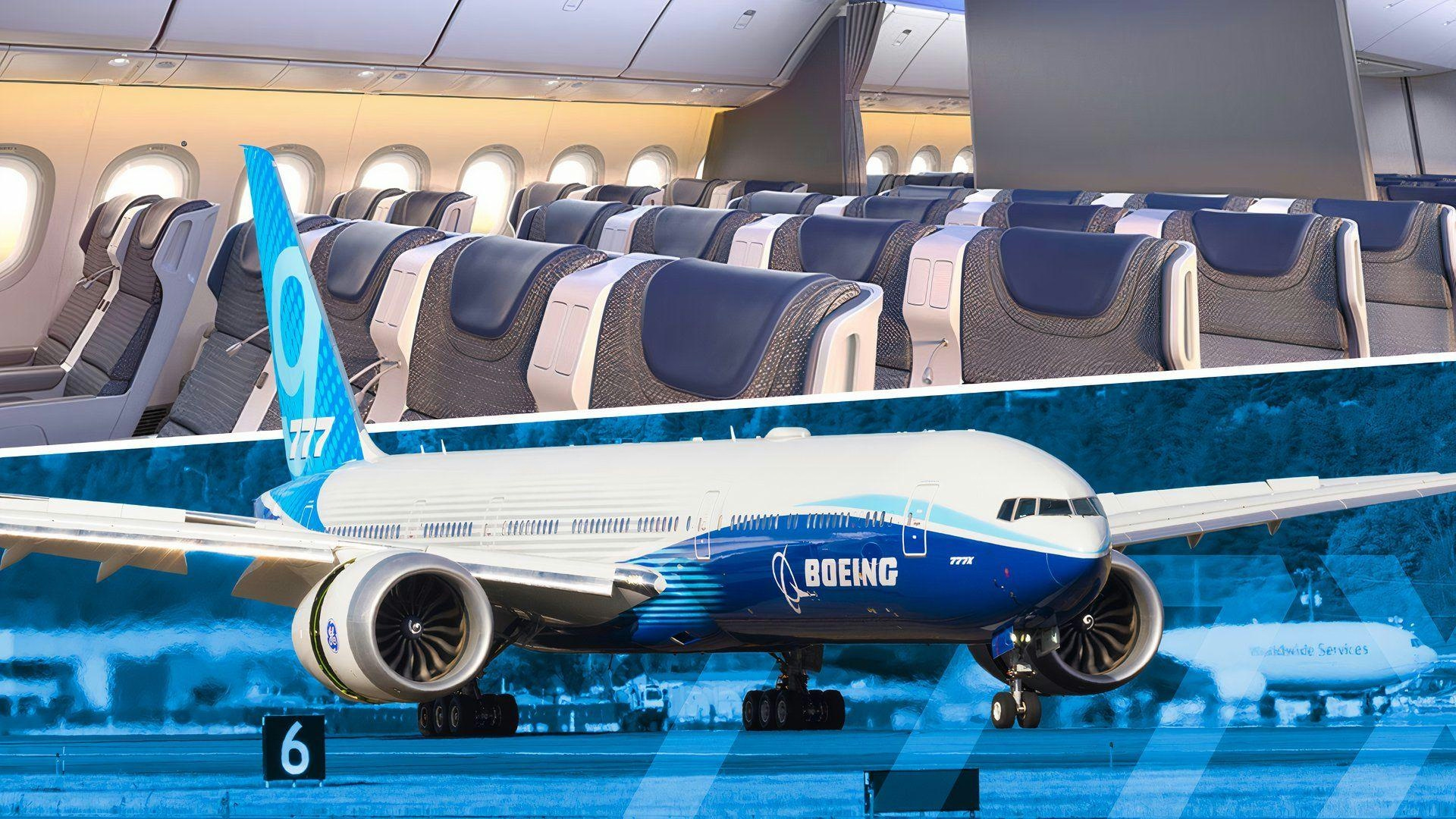
Why US Airlines Are Hesitant to Order the World's Largest Twinjet
Why US Airlines Are Hesitant to Order the World's Largest Twinjet
The 777X and Its Misalignment with US Carrier Strategies
The Boeing 777X, poised to become the world’s largest twin-engine jet, has encountered significant resistance from major US airlines. Despite its cutting-edge technology and substantial passenger capacity, the aircraft’s size and operational characteristics do not align with the strategic priorities of American Airlines, Delta Air Lines, and United Airlines—the so-called “Big Three.” None of these carriers currently plan to incorporate the 777X into their fleets, leaving launch customer Lufthansa and other international airlines as the primary purchasers.
A central factor behind this hesitation is the disconnect between the 777X’s large capacity and the operational models of US carriers, which predominantly rely on hub-and-spoke networks. The 777X is designed to replace aging Boeing 747s and Airbus A380s on high-demand, long-haul routes—markets where US airlines maintain a comparatively limited presence relative to their European and Middle Eastern counterparts. Instead, American, Delta, and United have favored smaller widebody aircraft such as the Boeing 787 and Airbus A350, which provide a more optimal balance of capacity, operational flexibility, and cost efficiency.
Impact of Global Trade Uncertainties and Technical Challenges
The broader context of global trade tensions further complicates the 777X’s prospects in the US market. The aviation industry, valued at approximately $1 trillion, faces ongoing tariff uncertainties that have prompted airlines and aerospace manufacturers to diversify supply chains and reevaluate vendor relationships. The shifting landscape of trade policies, including fluctuating exemptions and changing duties, has introduced additional risks for US carriers considering new aircraft acquisitions. This volatility has compelled airlines to reconsider network planning and capacity deployment strategies, making investment in a large, complex program like the 777X less attractive.
Compounding these challenges are manufacturing delays and technical setbacks that have undermined confidence in the 777X program. Regulatory hurdles, including certification delays and incidents such as the door panel explosion during testing, have raised concerns about the aircraft’s reliability and delivery timeline. Many US airlines continue to operate extensive fleets of earlier-generation Boeing 777s with significant remaining service life, reducing the urgency to transition to a new, larger model amid these uncertainties.
Competitive Landscape and Shifting Market Dynamics
The 777X family comprises two variants: the smaller 777-8 and the stretched 777-9. Both face intense competition from the Airbus A350, which is already widely adopted by international carriers. While some global airlines express interest in the higher-capacity 777-9, US carriers have demonstrated limited enthusiasm for either model. The COVID-19 pandemic accelerated a shift toward more flexible and fuel-efficient aircraft, prompting airlines to reassess fleet compositions and adapt to evolving travel patterns.
In conclusion, the combination of the 777X’s size, ongoing technical and regulatory challenges, and the complexities introduced by global trade uncertainties have left US airlines reluctant to commit to the program. For the time being, the world’s largest twinjet remains better suited to international carriers with concentrated hubs and strong long-haul demand, while US airlines continue to prioritize smaller, more versatile widebody aircraft tailored to their dynamic network requirements.
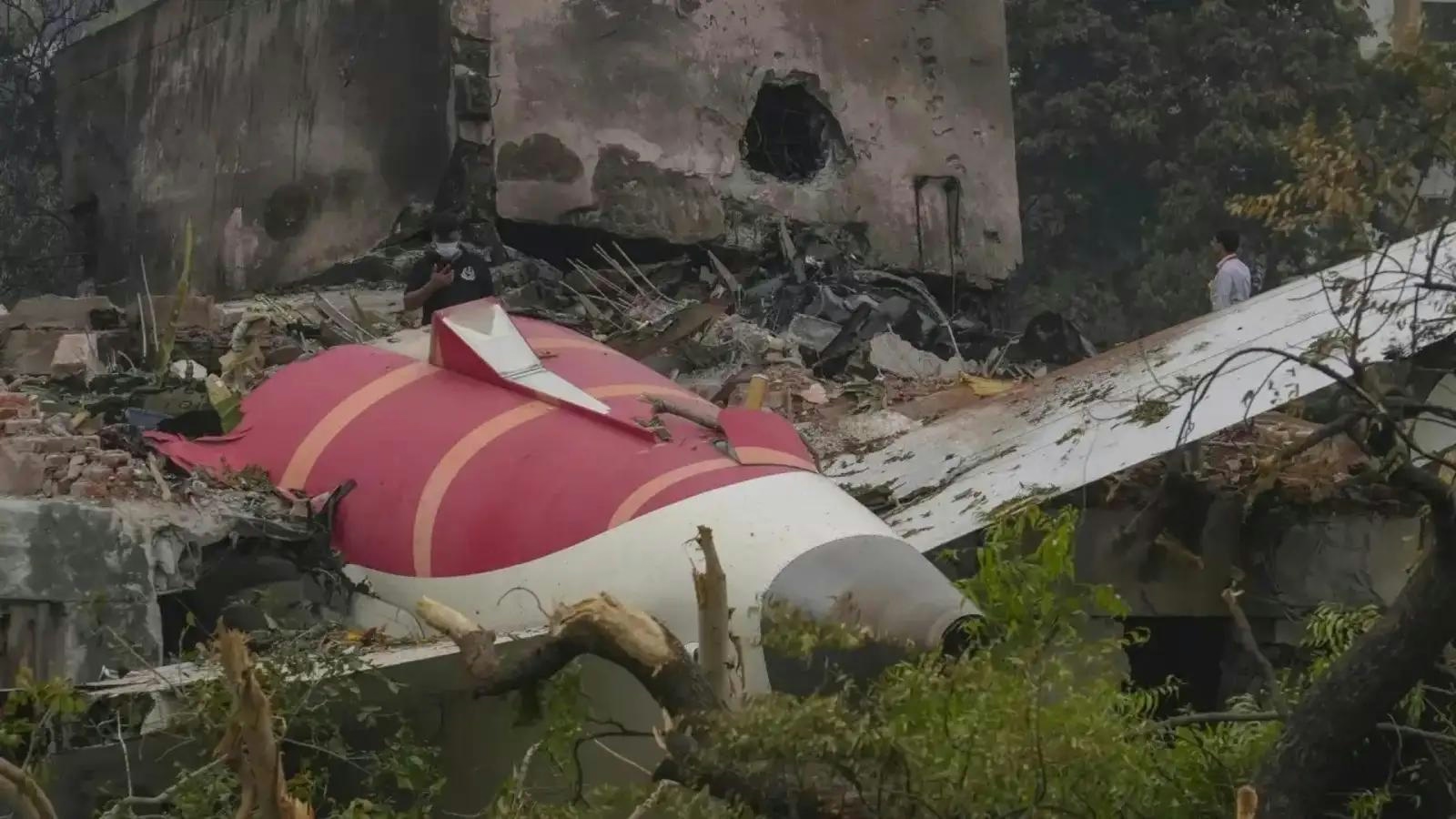
Air India Crash Report Raises Unanswered Questions
Air India Crash Report Raises Unanswered Questions
Unexplained Engine Fuel Control Switch Movements
The preliminary investigation into the June 12 crash of Air India flight AI 171 in Ahmedabad has brought to light a perplexing and critical detail: both engine fuel control switches on the Boeing 787-8 aircraft shifted from ‘RUN’ to ‘CUTOFF’ within a second of each other shortly after takeoff. This sudden and simultaneous action remains unexplained and has intensified scrutiny of the incident, leaving the victims’ families demanding clarity on whether the tragedy could have been averted.
The report reveals that cockpit voice recorder (CVR) data captured a brief exchange between the pilots, with one asking why the fuel had been cut off and the other denying responsibility. However, the investigation only paraphrases this dialogue, omitting direct quotations and failing to provide context about the conversation before or after this critical moment. Furthermore, the identities of the pilots involved—whether it was co-pilot Clive Kunder, who was flying the aircraft, or pilot-in-command Sumeet Sabharwal, who was monitoring—are not disclosed. This omission is notable given that standard investigative procedures typically allow for voice identification through headset microphone data and input from colleagues familiar with the crew.
Gaps in the Investigation and Industry Reactions
Aviation experts have observed that preliminary accident reports often focus on the sequence of events rather than the underlying causes. While this report offers a detailed timeline, it remains conspicuously silent on the pivotal cockpit exchange regarding the fuel cutoff. Although both fuel switches were reportedly returned to ‘RUN’ after the brief conversation, the report does not clarify who initiated the restart or what prompted the initial shutdown.
The absence of detailed CVR transcripts has generated speculation and concern among industry observers and the victims’ families. Experts emphasize that only a full release of the cockpit voice recordings, combined with flight data, can provide a comprehensive understanding of the pilots’ actions and communications during the critical moments preceding the crash.
Beyond the technical investigation, the crash is already impacting the aviation insurance market. Insurers and reinsurers in India and internationally are preparing for heightened scrutiny and potential financial losses. The Indian aviation insurance sector, which has been grappling with persistent losses, is expected to face further challenges as a result of this disaster. Market participants are closely monitoring the investigation’s progress, anticipating adjustments in risk assessments and coverage conditions.
Calls for Enhanced Cockpit Monitoring
The Ahmedabad tragedy has reignited longstanding calls for the installation of cockpit video recorders. Such devices have been recommended by agencies like the US National Transportation Safety Board (NTSB) but have faced resistance from pilot unions. Advocates argue that video footage could provide definitive evidence of cockpit activities and instrument readings, potentially resolving ambiguities that audio recordings alone cannot address.
As the investigation proceeds, the families of the victims and the broader aviation community await the release of the full CVR transcript and the final report, seeking answers to the unresolved questions that continue to surround the Air India crash.
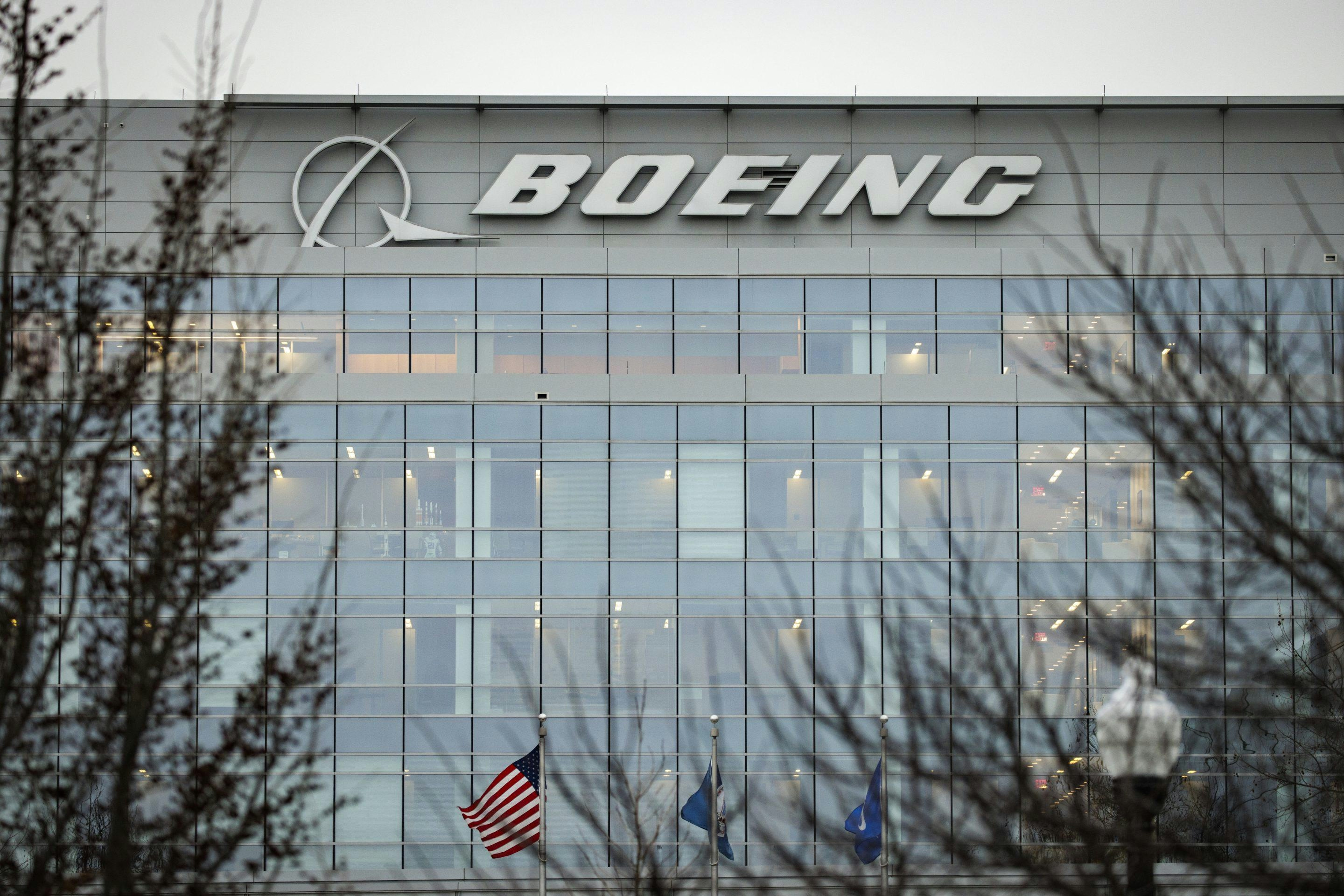
FAA Defends Boeing Switches as South Korea Orders Safety Checks—But Investors Rally Despite Turbulence
FAA Defends Boeing Fuel Switches as South Korea Orders Safety Inspections
The U.S. Federal Aviation Administration (FAA) has publicly defended the safety of Boeing aircraft fuel shutoff switches amid increased international scrutiny following a devastating Air India crash near Patna on June 12, which claimed 260 lives. This tragedy has reignited global concerns regarding Boeing’s safety protocols and prompted regulatory actions in several countries.
Investigation into Fuel Switches
India’s Aircraft Accident Investigation Bureau (AAIB) has identified the fuel shutoff switches on the aircraft as a potential factor in the crash. Preliminary findings indicate that these switches may have inadvertently shifted from the ‘run’ position to ‘cut-off’ during takeoff, possibly causing a sudden loss of engine power. Boeing had issued a service bulletin in 2018 addressing this component, but it remains uncertain whether the affected aircraft had undergone the recommended updates. This ambiguity has raised questions about compliance and the safety of other Boeing aircraft still in operation worldwide.
South Korea’s Precautionary Measures
In response to the incident, South Korea’s Ministry of Land, Infrastructure and Transport has mandated comprehensive inspections of all Boeing aircraft operated by national carriers, including Korean Air and Asiana Airlines. Unlike previous measures that focused primarily on the 787 Dreamliner, this directive encompasses the entire Boeing fleet within the country. Although no similar incidents have been reported domestically, South Korean officials have emphasized that the inspections are precautionary, reflecting a broader regulatory trend toward proactive safety oversight.
FAA and Boeing Reassurances
Despite the ongoing investigation, both the FAA and Boeing have maintained that the current design of the fuel shutoff switches does not present an immediate safety risk. The FAA’s internal Continued Airworthiness Notification affirmed that the fuel switch locks are safe and do not justify grounding aircraft or mandating repairs at this time. However, the agency has indicated that it may revise its guidance based on the final findings of the Indian investigation. Boeing has pledged full cooperation with investigators and is conducting its own review of the switch mechanism as part of its quality assurance processes.
Market Response and Investor Confidence
In the wake of these developments, Boeing’s stock experienced a brief decline in late June but subsequently rebounded, supported by the FAA’s reassurances and the absence of immediate regulatory action. Market analysts acknowledge that while investor confidence remains relatively steady, uncertainty persists. Should the investigation confirm a design flaw, Boeing could face significant reputational and financial repercussions, compounding challenges from the earlier 737 MAX crisis.
Ongoing Investigations and Future Implications
The AAIB continues its investigation with assistance from the U.S. National Transportation Safety Board (NTSB) and other international aviation authorities. A final report is anticipated later this year and may influence future FAA directives and global regulatory policies. Meanwhile, other aviation regulators are expected to consider similar inspections and may press Boeing for enhanced transparency and proactive safety measures.
As the investigation progresses, the aviation industry faces a delicate balance between regulatory vigilance and maintaining market confidence, highlighting the critical importance of safety and corporate accountability on a global scale.
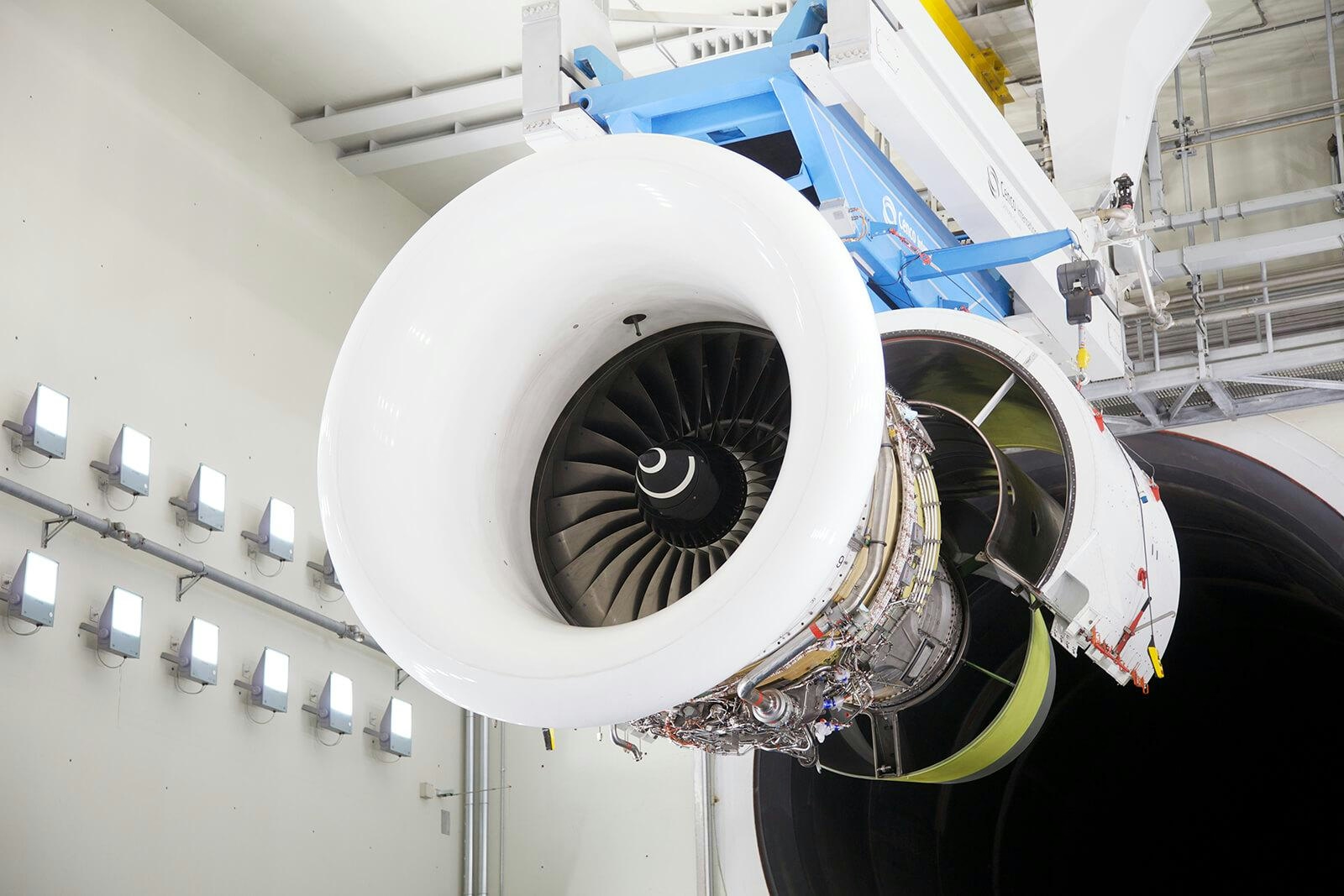
Rolls-Royce Forms Task Force to Tackle Trent 1000 Supply Chain Problems
Rolls-Royce Forms Task Force to Address Trent 1000 Supply Chain Challenges
Rolls-Royce has established a dedicated task force to confront persistent supply chain issues impacting its Trent 1000 engine program. This initiative aims to streamline operations, uphold production schedules, and guarantee the timely delivery of essential engine components. These efforts are critical to minimizing operational disruptions for airline customers reliant on the Trent 1000.
Enhancements and Market Response
As part of a wider £1 billion investment to improve the durability and efficiency of its Trent engine family, Rolls-Royce has introduced a Durability Enhancement Package specifically for the Trent 1000. This package has effectively doubled the engine’s Time-on-Wing, thereby significantly extending scheduled maintenance intervals. The improvements have resulted in reduced downtime for airlines and enhanced operational reliability, contributing to the restoration of customer confidence in the program.
The market has responded favorably to these advancements. Rolls-Royce recently secured international contracts for 142 aircraft engines, including new orders from EgyptAir. These developments underscore the company’s commitment to strengthening its position within the global aerospace sector, despite the ongoing complexities of its supply chain.
Challenges and Industry Context
The newly formed task force faces several significant challenges, including the need to maintain stringent production timelines, ensure the quality of components, and manage relationships with a diverse and global supplier base. Rolls-Royce is collaborating closely with its suppliers and partners to address these issues, with the objective of preventing further disruptions and preserving its reputation for reliability.
Industry analysts observe that while detailed information on competitor responses remains limited, Rolls-Royce’s proactive investments and strategic partnerships are viewed as essential measures to sustain its competitive advantage. There is speculation that rival engine manufacturers may initiate similar programs aimed at enhancing engine reliability and efficiency, potentially intensifying competition within the aviation engine market.
Rolls-Royce continues to monitor the evolving situation closely, reaffirming its commitment to customer satisfaction and long-term operational excellence. The company’s ongoing efforts reflect its determination to navigate supply chain complexities and maintain its leadership role in the aerospace industry.
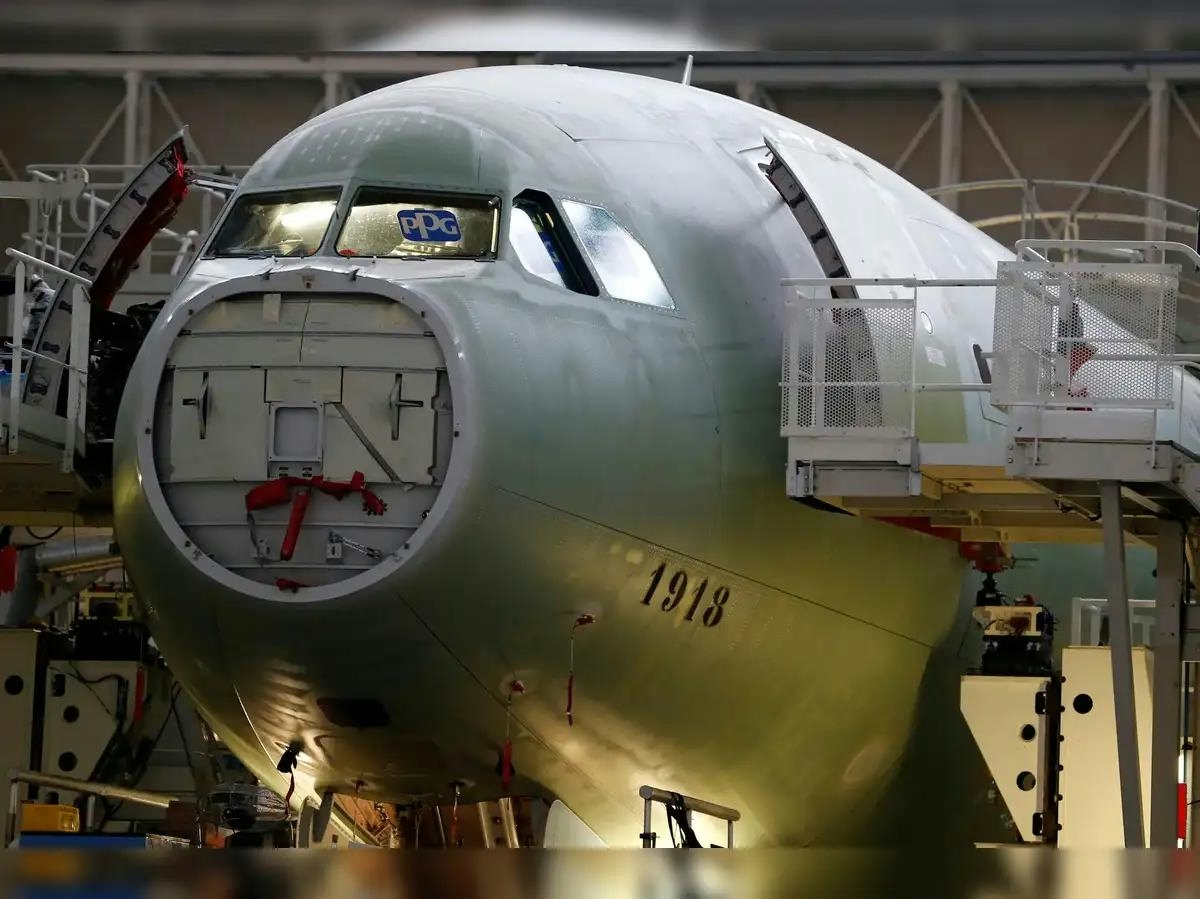
Delta Air Lines Avoids Tariffs by Repurposing Airbus Engines
Delta Air Lines Sidesteps Tariffs by Repurposing Airbus Engines
Delta Air Lines has implemented a strategic response to circumvent tariffs imposed on aircraft imports between the United States and Europe. These tariffs, which levy additional fees on certain European-built jets, have intensified financial pressures on an industry already operating with narrow profit margins. In a novel approach, Delta removes U.S.-manufactured engines from new Airbus aircraft assembled in Europe and ships these engines back to the United States.
By repurposing these American-made engines, Delta is able to refurbish grounded aircraft within its existing fleet, particularly those sidelined due to issues with their original Pratt & Whitney engines. This method enables the Atlanta-based carrier to sustain fleet growth and operational capacity without incurring the 10% tariff that applies to importing complete aircraft from Europe.
Operational and Regulatory Challenges
According to reports from The Detroit News, Delta’s process involves detaching the U.S.-built engines from new Airbus jets prior to delivery. Since the engines originate domestically, their return to the United States does not trigger import tariffs. Delta then installs these engines on previously delivered but inactive aircraft, effectively returning them to service. This strategy allows the airline to expand its fleet while avoiding the elevated costs associated with new aircraft deliveries under current trade regulations.
Delta CEO Ed Bastian emphasized the company’s resolve to avoid tariff payments, stating, “We are not planning to pay tariffs on aircraft deliveries.” However, this workaround results in some engine-less Airbus jets remaining idle in Europe. Delivery delays are compounded not only by tariffs but also by pending regulatory approvals, including certification for the aircraft’s seating configurations, which prevent these jets from entering commercial service.
This predicament is not exclusive to Delta. Other carriers, such as Lufthansa, have encountered similar obstacles. Last year, Lufthansa was unable to take delivery of Boeing 787-9 aircraft due to the Federal Aviation Administration’s delay in approving the seats in its new Allegris cabin. Such regulatory and trade challenges have compelled airlines to adjust delivery schedules and reallocate resources to meet operational demands.
Industry Implications and Future Outlook
Delta’s approach underscores broader shifts within the aviation sector as airlines reevaluate their supply chains and vendor relationships in response to evolving trade policies. The imperative to diversify sourcing—potentially favoring countries less affected by tariffs—may transform how airlines procure parts, conduct maintenance, and select future aircraft. Competitors are likely to adopt similar strategies, intensifying competition for engines and maintenance services.
As the tariff landscape continues to evolve, airlines will need to adapt their network planning, capacity deployment, and aircraft acquisition strategies to mitigate risks and preserve operational flexibility. Navigating these complex regulatory and trade environments remains a significant challenge for global carriers like Delta and Lufthansa, highlighting the critical importance of adaptability in an industry shaped by shifting economic and political realities.
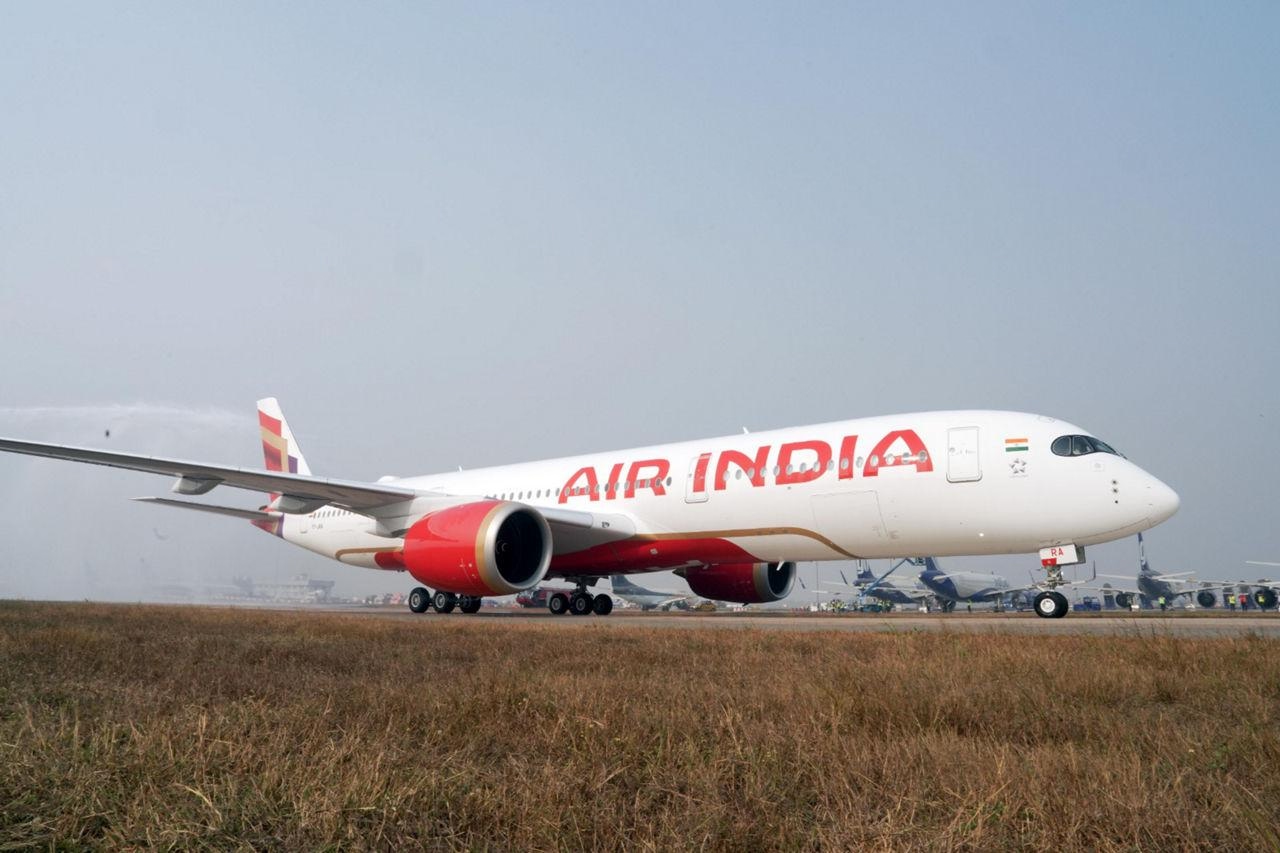
Air India Announces Delivery Schedule for A321neo, A350-1000, and 787-9 Aircraft
Air India Announces Delivery Schedule for A321neo, A350-1000, and 787-9 Aircraft
Major Fleet Modernization Underway
Air India Group, now under the ownership of the Tata Group, is advancing a landmark fleet renewal initiative that promises to transform its operational capabilities and competitive positioning within the Indian aviation sector. Central to this effort is an unprecedented order of 570 aircraft, among the largest in the history of commercial aviation. This extensive acquisition includes the latest models from Airbus and Boeing, notably the A321neo, A350-1000, 787-9 Dreamliner, and 777-9. These additions are expected to significantly expand Air India’s capacity and modernize its fleet.
Delivery Timeline and Deployment Plans
To date, the Air India Group—which comprises both Air India (AI) and Air India Express (IX)—has taken delivery of six Airbus A350-900s alongside more than 40 Boeing 737 MAX aircraft. The next phase of this fleet expansion is scheduled to commence in mid-2025, with the introduction of the first A321neo, A350-1000, and 787-9 Dreamliner aircraft. This phase represents a critical step in the airline’s strategy to increase capacity and enhance service offerings.
Air India Express will be the initial operator of the new A321neo, launching scheduled services from April 15, 2025. The inaugural routes will connect Delhi (DEL) with Bengaluru (BLR) and Srinagar (SXR), with subsequent expansions on April 20 to include Ayodhya (AYJ) and Jaipur (JAI). The A321neo will be configured with 180 economy seats and 12 business class seats, providing improved passenger options on key domestic routes. Currently, Air India operates two A321neos (registrations VT-RTC and VT-RTD) in a 192-seat dual-class layout.
Supply Chain Challenges and Operational Adjustments
Despite the progress, Air India continues to grapple with significant supply chain disruptions. CEO Campbell Wilson has acknowledged ongoing difficulties in procuring essential components such as engines, fuselages, and premium cabin seats. These challenges are expected to cause delivery delays from both Airbus and Boeing, potentially affecting the airline’s growth trajectory for the next four to five years. In response, Air India is extending the operational lifespan of older aircraft, which entails increased maintenance costs, and is facing obstacles in leasing additional planes due to global shortages. The airline is also exercising prudence regarding further Boeing orders amid manufacturing and regulatory constraints.
Widebody Fleet Expansion: A350-1000 and 787-9
The first A350-1000 destined for Air India is nearing completion at Airbus’s Toulouse facility and is anticipated to be delivered in 2026. Currently registered as F-WZFI, the aircraft will soon be re-registered under the VT-series for Indian operations. Concurrently, the initial Boeing 787-9 Dreamliners from the 2023 order are expected to arrive by the end of 2025. Three 787-9s are presently in production at Boeing’s Charleston, South Carolina plant, equipped with General Electric GEnx-1B engines.
Order Composition and Market Implications
Air India’s comprehensive 570-aircraft order includes 20 A350-900s, 20 A350-1000s, 140 A320neos, and 70 A321neos from Airbus, alongside 20 787-9 Dreamliners, 10 777X, and 190 737-8 MAX aircraft from Boeing. Additionally, a 2024 order comprises 10 more A350s and 90 A320 Family aircraft. This sweeping modernization is anticipated to provoke strategic responses from rival carriers, who may reassess their fleet plans in light of Air India’s expanded capacity. Industry analysts expect this development to intensify competition and elevate passenger service standards across the Indian aviation market.
Commitment to Sustainability and Efficiency
Air India’s investment in next-generation aircraft reflects a strong commitment to operational efficiency, passenger comfort, and environmental stewardship. The new A350 and 787-9 models offer substantial fuel savings and reduced emissions, aligning with global efforts to promote sustainable aviation. As these aircraft enter service from mid-2025 onward, Air India is positioned to lead the industry’s transition toward eco-friendly, high-capacity air travel.
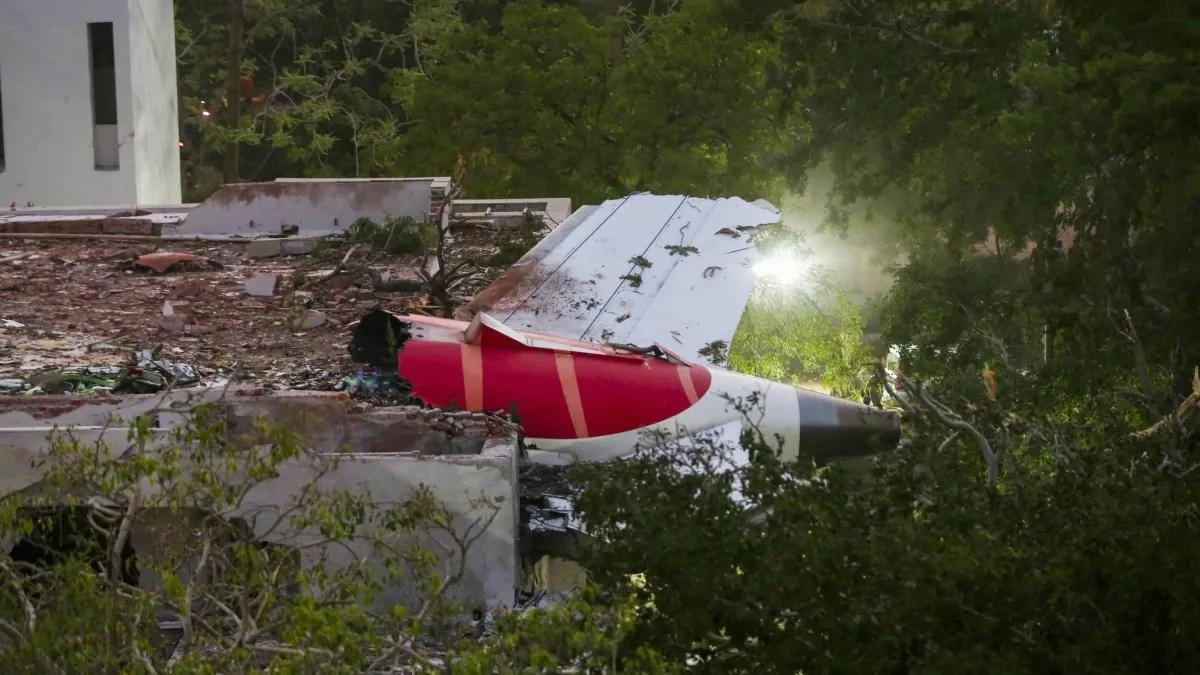
AI Replaced Throttle Control Module Twice in Boeing Plane Crash
Air India Replaced Throttle Control Module Twice on Crashed Boeing 787, Investigation Reveals
Background and Investigation Focus
Air India replaced the Throttle Control Module (TCM) of its Boeing 787-8 Dreamliner twice within the last six years, following a 2019 directive issued by Boeing, according to sources involved in the ongoing investigation of the June 12, 2025, crash near Ahmedabad. The aircraft, registered VT-ANB and bound for London, has come under intense scrutiny as authorities seek to determine the cause of the fatal accident, with particular attention on the reliability of the Dreamliner’s systems, especially the TCM.
The TCM, which incorporates the aircraft’s fuel control switches, has emerged as a central element in the probe after investigators discovered that these switches were disengaged immediately after takeoff. The preliminary report released by the Aircraft Accident Investigation Bureau (AAIB) on Saturday confirmed that the TCM was replaced on the aircraft in both 2019 and 2023. However, the report clarified that these replacements were not related to any faults with the fuel control switches.
Maintenance Directives and Regulatory Context
In 2019, Boeing issued a revised Maintenance Planning Document (MPD) mandating that all Dreamliner operators replace the TCM every 24,000 flight hours. Air India complied with this directive, replacing the TCM on VT-ANB twice since the MPD was issued. Specific details of the MPD have not been publicly disclosed, and Air India has not responded to inquiries regarding the replacements.
The crash has prompted the Indian government to initiate an urgent inspection of all Boeing 787 aircraft operating within the country. This incident poses significant challenges for both Air India and Boeing as they strive to restore public confidence and address any potential technical vulnerabilities. Market analysts and investors are closely monitoring the situation for possible financial implications, while competitors in the aviation sector evaluate the broader impact on the industry.
A Boeing spokesperson reiterated the company’s commitment to supporting the investigation and Air India, stating, “We will defer to the AAIB to provide information about AI171, in adherence with the UN International Civil Aviation Organization protocol known as Annex 13.”
Findings and Ongoing Analysis
The AAIB report noted that, at this stage, no immediate safety actions are recommended for operators of the B787-8 or the GE GEnx-1B engines, which powered the VT-ANB. The report also referenced a Special Airworthiness Information Bulletin (SAIB) issued by the US Federal Aviation Administration (FAA) in December 2018, which highlighted a potential issue with the disengagement of the fuel control switch locking feature on certain Boeing models. However, the FAA did not classify this as an unsafe condition requiring a mandatory directive. Air India confirmed that it did not perform the inspections recommended in the SAIB, as it was advisory in nature.
Maintenance records reviewed by investigators revealed no reported defects related to the fuel control switch since 2023. The AAIB emphasized that the reasons for the TCM replacements were unrelated to the fuel control switches.
As the investigation continues, analysis of the aircraft’s black boxes is expected to yield critical insights into the role of the TCM and other systems in the crash. These findings are likely to influence future safety protocols and industry practices.
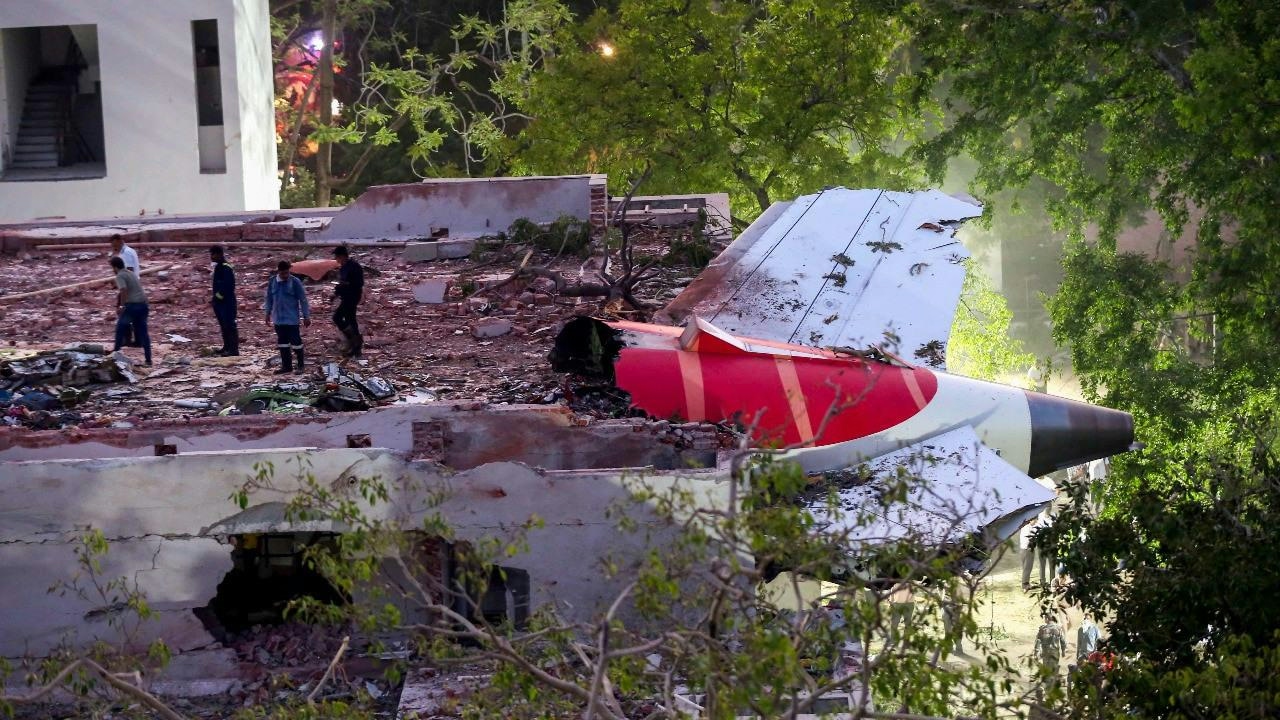
Air India CEO Urges Caution as AI 171 Crash Investigation Continues
Air India CEO Urges Caution as AI 171 Crash Investigation Continues
Air India CEO and Managing Director Campbell Wilson has called for restraint and caution among employees as the investigation into the June 12 crash of flight AI 171 remains ongoing. In a message to staff on Monday, Wilson acknowledged that while the preliminary report has offered “greater clarity,” it has also raised additional questions surrounding the tragic accident. The crash, which claimed 260 lives, stands as the deadliest Indian airline disaster in four decades and marks the first fatal incident involving a Boeing 787 Dreamliner worldwide.
Preliminary Findings and Investigation Status
Wilson emphasized that the initial findings from India’s Aircraft Accident Investigation Bureau (AAIB) did not reveal any mechanical or maintenance faults with the aircraft or its engines. The report also ruled out issues related to fuel quality, the aircraft’s take-off roll, and the pilots’ medical conditions. “Instead of focusing on media speculation, I suggest we note that the Preliminary Report found no mechanical or maintenance issues with the aircraft or engines, and that all mandatory maintenance tasks had been completed,” Wilson stated.
The Boeing 787-8 involved in the accident was operating a flight from Ahmedabad to London Gatwick when it crashed shortly after take-off. The disaster resulted in the deaths of 241 of the 242 people on board, as well as 19 individuals on the ground. According to the AAIB’s initial report, a probable primary cause was identified: the engines were starved of fuel after the fuel control switches transitioned from ‘RUN’ to ‘CUTOFF’ within a second of each other just after lift-off. Cockpit voice recorder data captured one pilot questioning the other about the fuel cutoff, with both denying any action to move the switches. The report does not clarify whether the switches were moved by the pilots or if a technical, mechanical, or software malfunction was involved.
Wilson cautioned that the investigation remains incomplete and urged staff to avoid premature conclusions. “Over the past 30 days, we’ve seen an ongoing cycle of theories, allegations, rumours, and sensational headlines, many of which have later been disproven,” he said, underscoring the need for patience as investigators continue their work to determine the root cause.
Broader Implications and Response
The crash has drawn intense scrutiny not only from Indian authorities but also from international aviation agencies. The recovery and analysis of critical flight recorder data are expected to play a pivotal role in the ongoing investigation. Meanwhile, families of the victims have expressed concerns regarding Air India’s handling of compensation negotiations, alleging that the airline employed threatening tactics and pressured them to disclose details about their financial dependencies. Both Air India and its parent company, Tata Group, have affirmed that immediate assistance has been extended to the victims’ families.
As the inquiry progresses, Wilson’s message highlights the importance of relying on verified information and allowing investigators to complete their work before drawing any definitive conclusions about the cause of this devastating disaster.
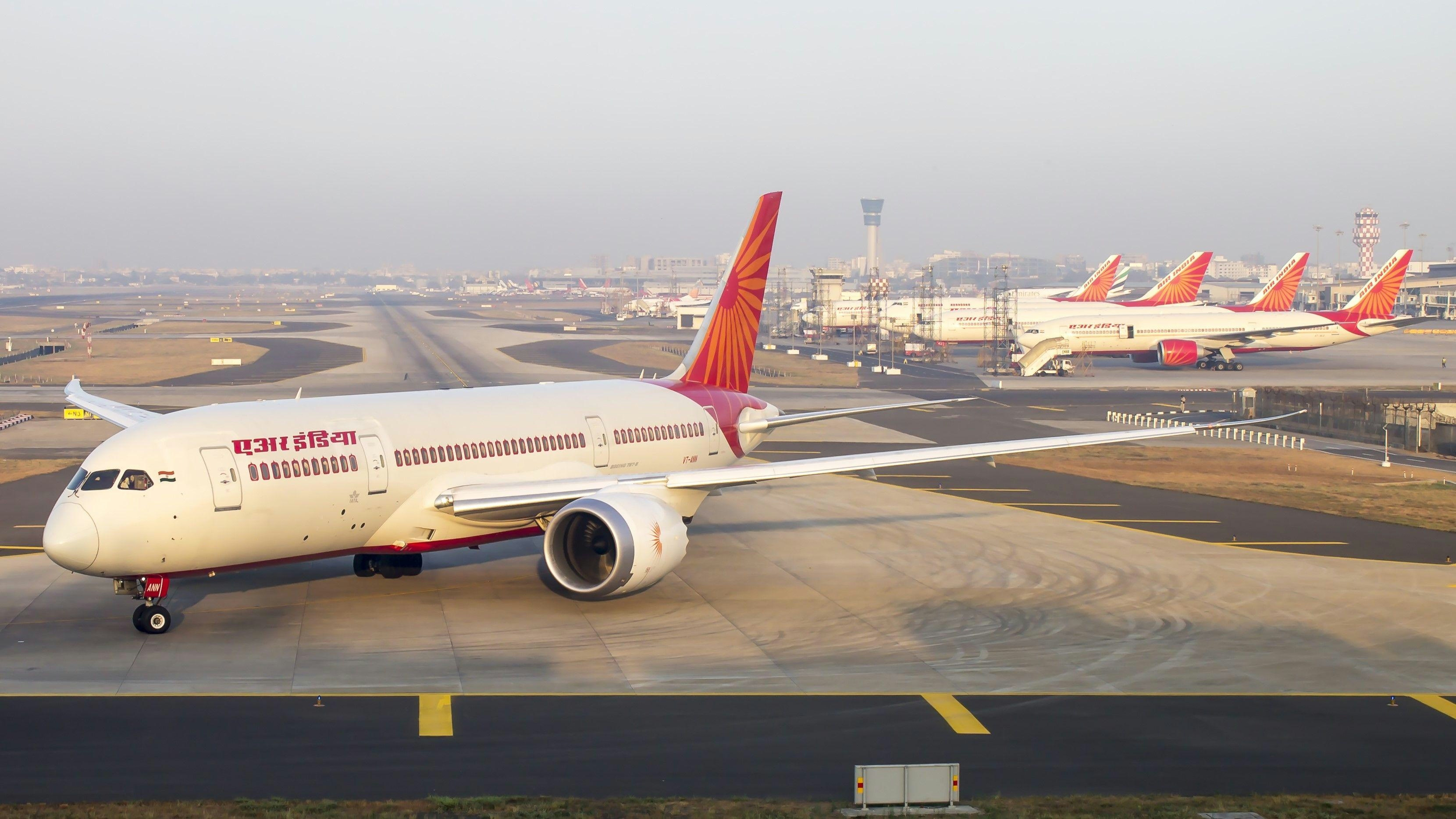
Airlines Inspect Boeing 787 Fuel Switches Following Air India Crash Report
Airlines Conduct Global Inspections of Boeing 787 Fuel Switches Following Air India Crash Report
In the aftermath of the preliminary investigation into the Air India Flight 171 crash, airlines worldwide have initiated inspections of fuel-cutoff switches on Boeing aircraft. The London-bound Boeing 787 tragically crashed just 32 seconds after departing Ahmedabad Airport on June 12, resulting in the deaths of 241 of the 242 passengers and crew on board, as well as 19 individuals on the ground.
Findings from the Preliminary Investigation
India’s Aircraft Accident Investigation Bureau revealed last Friday that both engines lost power shortly after takeoff due to fuel being cut off. The cockpit voice recorder captured a tense exchange between the pilots, with one questioning the other about the fuel cutoff, which was denied. The fuel-cutoff switches on Boeing jets are equipped with stop-lock mechanisms and protective brackets designed to prevent accidental activation. However, the investigation is currently examining whether these safety features operated as intended during the incident.
The report also referenced a 2018 Federal Aviation Administration (FAA) bulletin that urged airlines to inspect the locking mechanisms on fuel control switches across various Boeing models, including the 787. This advisory followed reports of disengaged locking features on some Boeing 737 switches, which increased the risk of inadvertent engine shutdowns. The FAA warned that if the locking mechanism is disengaged, the switch could be moved without lifting, potentially causing unintended engine shutdowns.
Industry Response and Regulatory Actions
Despite the FAA’s advisory, Air India had not conducted the recommended inspections, as the guidance was not mandatory. In response to the crash report, aviation regulators in India and South Korea have now mandated inspections of the fuel control locking features on Boeing aircraft. Airlines in India, Singapore, and South Korea have commenced these checks amid heightened safety concerns.
A source familiar with the matter disclosed that Air India began voluntary inspections of fuel control switches on its 787 and 737 fleets over the weekend. Approximately half of the 787s and nearly all 737s have been inspected to date, with no issues detected. The airline expects to complete the inspections by Wednesday.
Similarly, Germany’s Lufthansa and its subsidiary Austrian Airlines have conducted precautionary checks on their Boeing 787 fleets. A Lufthansa spokesperson confirmed that no problems were identified during these inspections.
Boeing and the FAA continue to assert that the fuel switch locking mechanisms are safe. Nevertheless, the regulatory directives and widespread inspections reflect the aviation industry’s increased vigilance following the Air India tragedy. While no defects have been found so far, airlines and regulators remain closely engaged in monitoring the situation.
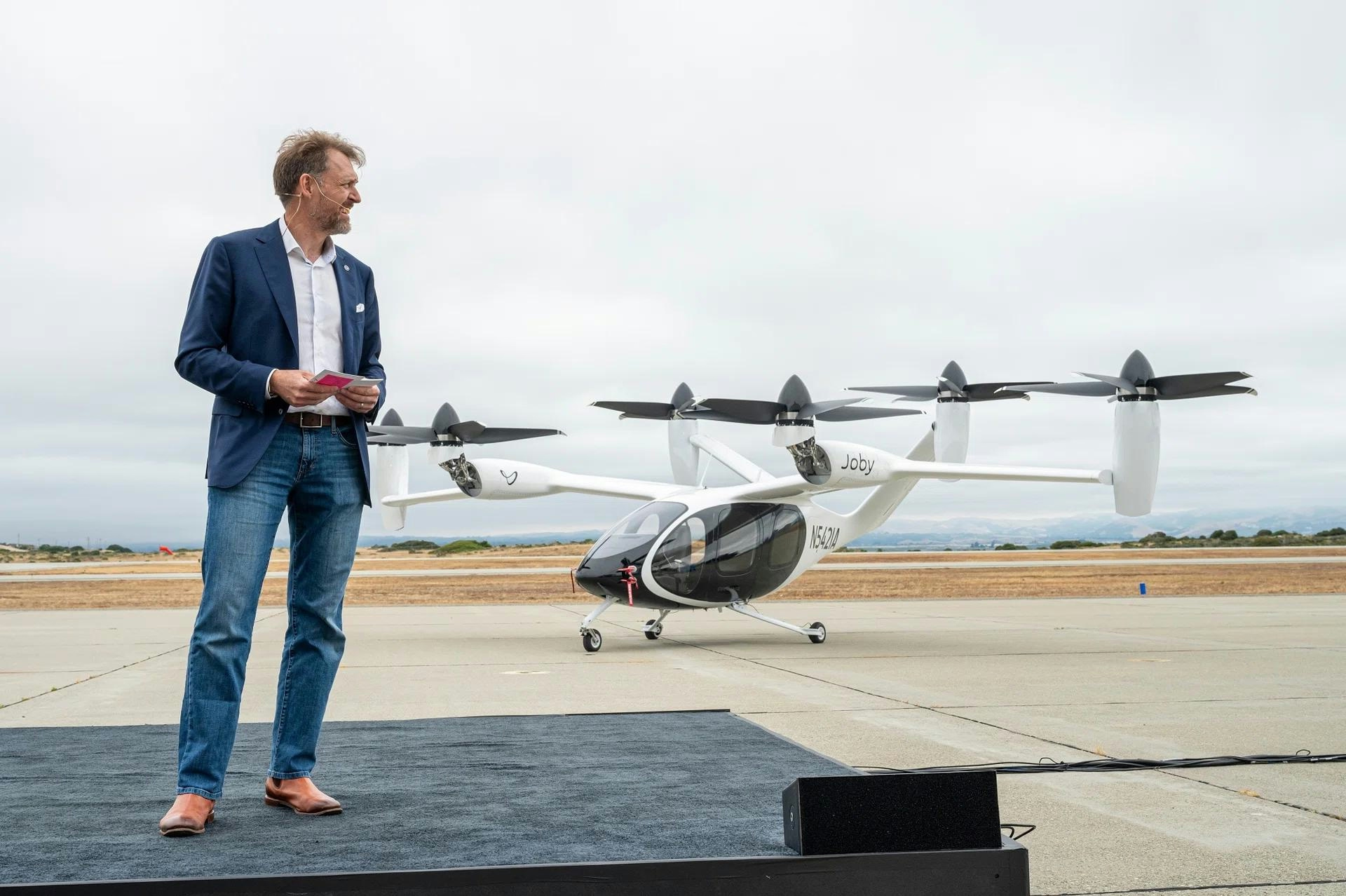
Flying Taxi CEO Regains Billionaire Status After Stock Surges 160%
Flying Taxi CEO Regains Billionaire Status After Stock Surge
Joby Aviation’s Market Revival
Four years after a high-profile SPAC debut followed by a significant stock decline, Joby Aviation has experienced a remarkable resurgence, propelling CEO JoeBen Bevirt back into billionaire ranks. Bevirt, 51, currently holds a 12% stake in the electric air-mobility company, now valued at approximately US$1.3 billion according to the Bloomberg Billionaires Index. The value of his holdings has more than doubled since April, driven by a 160% surge in Joby’s stock from its yearly low.
Shares rose 10% to US$13.92 in New York trading on Thursday, reflecting renewed investor confidence in Joby’s electric vertical takeoff and landing (eVTOL) aircraft. This momentum followed the company’s successful piloted test flight in Dubai last month and was further bolstered by a recent U.S. executive order establishing a federal pilot program for advanced air mobility technology. Bevirt emphasized the administration’s prioritization of air taxis in a March interview with Bloomberg Television, highlighting strong backing from the Department of Defense.
Industry Growth and Competitive Pressures
Joby’s revival is part of a broader wave of positive developments within the emerging air mobility sector. The company has announced plans to double production capacity at its primary manufacturing facility, aiming to introduce its quiet, runway-free aircraft—capable of speeds up to 322 km/h—into commercial service. Bevirt has outlined ambitious plans for seven-minute flights connecting lower Manhattan to JFK Airport, with pricing designed to compete with premium ride-hailing services.
Despite these advances, Joby faces intensifying competition as major technology firms enter the autonomous mobility market. Tesla recently launched its own self-driving taxi service, triggering an 8% increase in its stock and boosting CEO Elon Musk’s net worth by US$15 billion. Amazon’s Zoox division has also expanded with a new production facility for self-driving taxis, signaling rapid progress and escalating investment in the sector. Additionally, a leading self-driving AI company secured US$600 million in funding, while a US$250 million deal for air taxis further underscores the growing market appetite.
Challenges Ahead for Joby Aviation
These developments underscore both the opportunities and challenges confronting Joby. While the company’s stock has rebounded sharply, the sector’s rapid evolution may invite increased regulatory scrutiny and intensify competition from well-capitalized rivals. At the time of its 2021 public listing, Joby had yet to deliver a finished product, and its first paying customer remains forthcoming. Nonetheless, recent interest from the defense sector and broader industry optimism have fueled the current rally.
JoeBen Bevirt, a mechanical engineering graduate of UC Davis and Stanford, is a seasoned entrepreneur with a track record that includes founding Velocity11, a robotics firm, and Joby, the maker of the GorillaPod camera tripod. As Joby Aviation advances toward commercial operations, the company’s future—and Bevirt’s billionaire status—will hinge on its ability to navigate a rapidly changing landscape shaped by technological innovation and formidable competitors.
Ask AeroGenie